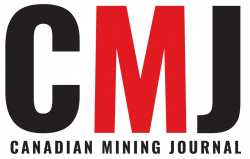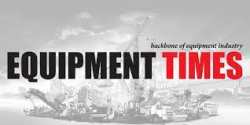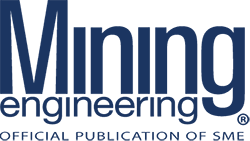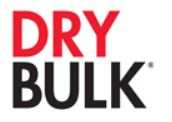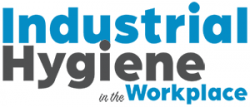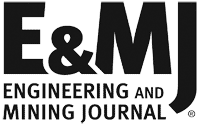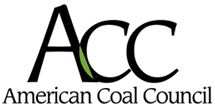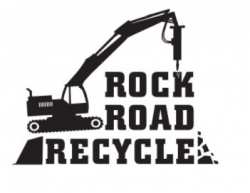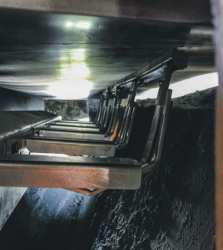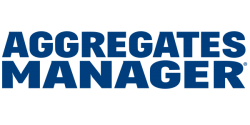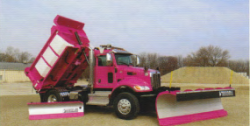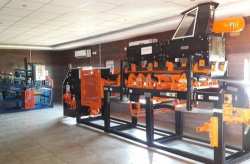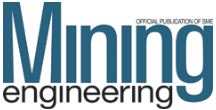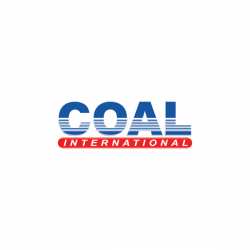Martin In The Press
Martin Engineering is very involved in the industries we serve and is often featured in their related publications. Some of those stories are compiled here.
Martin Introduces the Next Generation of Rail Car Openers - Engineering & Mining Africa
The global leader in bulk material flow accessories is introducing a redesigned railcar opener that improves ease of use and reduces potential hazards for workers. The two-wheeled Martin® Gen 4 Railcar Opener from Martin Engineering delivers strong, controlled non-impacting power to open and close even the most difficult railcar gates.
Read MorePreventing Fugitive Material from Conveyors - HUB4
Most conveyors experience some degree of material loss due to spillage, leakage, dust, and carryback, collectively known as fugitive materials. This loss can range from 3% in poorly operated and maintained systems to less than 0.1% in world-class operations.[1] Although fugitive materials cannot be completely eliminated from bulk material handling conveyors, the issue can be effectively managed, leading to cleaner, safer and more productive operations.
Read MoreMartin Engineering expands Australian operations - Australian Mining
A global leader in belt conveyor accessories and bulk flow technology is expanding its Australian operations to offer solutions to more customers.
Read MoreMartin Engineering launches Martin® X-Stand - Indian Cement Review
Martin Engineering has launched the Martin® X-Stand, a heavy-duty mounting system designed to improve the safety, accessibility, and efficiency of air cannon installations in industrial environments. Built to withstand harsh conditions, the rugged steel cube frame keeps air cannons away from hot or hazardous areas while offering clear walkways and easy maintenance.
Read MoreMartin® X-Stand Improves Air Cannon Efficiency and Safety - The Mining Review Journal
The global leader in bulk material flow technology, Martin Engineering, has introduced a heavy-duty air cannon mounting system. The Martin® X-Stand is an organization system that safely keeps air cannons away from super-heated or potentially hazardous areas while offering easy service access. The result is clearer walkways, improved safety, and greater maintenance efficiency for a lower cost of operation.
Read MoreMartin® X-Stand improves air cannon efficiency and safety - Modern Quarrying
Martin Engineering has introduced a heavy-duty air cannon mounting system. The Martin® X-Stand is an organization system that safely keeps air cannons away from super-heated or potentially hazardous areas while offering easy service access. The result is clearer walkways, improved safety, and greater maintenance efficiency for a lower cost of operation.
Read MoreMartin Engineering introduces system to improve air cannon efficiency and safety - Skillings Mining Review
Martin Engineering – a global leader in bulk material flow technology – has introduced a heavy-duty air cannon mounting system. The Martin X-Stand is an organization system that safely keeps air cannons away from super-heated or potentially hazardous areas while offering easy service access. The result is clearer walkways, improved safety, and greater maintenance efficiency for a lower cost of operation.
Read MoreKeys to Successful Conveyor Safety and Maintenance Training - Quarry Management
Bulk-handling conveyors are massive, powerful systems that move tonnes of material per hour in complex networks over long distances. Whether the systems are in a quarry, cement plant or port, their size, speed, and power present the risk of catastrophic injury in the blink of an eye. This makes training essential, no matter what activity is happening around a conveyor.
Read MoreCan You Handle Alternatives? - World Cement
Lost production is usually the primary cost of flow problems, but the expense can become apparent in a variety of secondary ways. Shutdowns to clear blockages and buildup also cost valuable process time and maintenance hours. That increases maintenance costs and diverts service teams away from core activities, potentially introducing needless safety risks.
Read MoreAir flow control – North American Mining Magazine
The consequences of failing to control fugitive materials include unplanned downtime, excessive cleaning costs, regulatory actions, poor public relations and safety incidents. Addressing the issues with workable long-term solutions improves availability, housekeeping and safety, ultimately enhancing the company’s cash flow.
Read MoreMartin Engineering’s sustainable practices at AIMEX - Australian Bulk Handling Review
Martin Engineering technologies optimise conveyor performance, control dust emissions, and prevent material spillage, directly contributing to improved energy efficiency and a lower carbon footprint.
Read MoreConveyor Solutions Maintenance Wants - Coal Age
New conveyor technology provides increased uptime, improved safety, and reliability
Read MoreConveyor Solutions Maintenance Wants - Coal Age
The newest solutions from the industry’s top conveyor accessory suppliers were designed either with advice from maintenance techs or with their gripes in mind. The solutions offer time savings, efficiency gains, worksite safety improvements, durability and longevity, and improved conveyor system performance, the suppliers said. Managers and back office personnel will relish the cost savings and uptime. And, perhaps most importantly, corporate will appreciate the goosed production.
Read MoreFlowing into safety: Stopping silo clogs - Australian Bulk Handling Review
Flow aids can help avoid expensive delays when working with silos. Humidity, material type, or settling can cause serious material flow issues like clogging and expensive delays.
Read MoreDesigning conveyor retrofits for production and safety - African Mining
Conveyors are among the fastest and potentially dangerous cargo transport systems at a bulk handling operation. Even though their safety and performance are critical to the operation’s success, the impact of their contribution to overall efficiency is often unrecognised by management and workers alike. Operational basics of belt conveyor systems are too often a mystery to those employees who have little understanding about the hardware installed and the performance required from the components.
Read MoreConveyor Fires: Causes and Prevention - Quarry Management
Martin Engineering, a global leader in conveyor accessories, are dedicated to conveyor safety by educating the bulk handling industry on the hazards of conveyor fires. With the Foundations Learning Center, the largest comprehensive free conveyor training archive on the web, Martin experts give detailed insight into the causes and prevention of deadly fires. This article, written in collaboration with the authors of ‘Foundations for Conveyor Safety’, gives an overview of how to improve workplace safety.
Read MoreNew tech improves conveyor maintenance for limestone quarry - Australian Mining
Keeping conveyor belts running at their best is critical to safe, efficient production.
Read MoreBelt cleaners to boost productivity at RB bulk handling terminal
With a network of around 30 conveyors moving materials in and out of the port, 24 hours a day, seven days a week, an efficient operation is essential. Transfer times must be kept to a minimum so shipping remains on schedule – that means maximising speed and volume without running the risk of excess spillages, blockages and buildups which, if left unchecked, can lead to conveyor damage or total breakdown.
Read MoreTransnet Revolutionises Belt Cleaning - Global Mining Review
The largest port operator in South Africa, Transnet, has made a fresh investment to boost productivity at its flagship bulk handling terminal by switching to CleanScrape® belt cleaners from Martin Engineering.
Read MoreDreams and Goals Achieved in Chicago - Bulk Handling Today
A team of six employees and family members from global bulk handling solutions provider, Martin Engineering, spent months of training and discipline to prepare for the 2024 Chicago Marathon to benefit St. Jude Children’s Research Hospital. Sparked by a close friendship that started in South Africa 24 years ago, the team turned aspiration into a worthy cause.
Read MoreMeasuring success from conveyor maintenance and safety training - Canadian Mining Journal
Are you just checking the boxes by doing required training hours, or is your goal to get a return on your investment? There can be huge improvements in production, maintenance labour, risk avoidance, and cashflow by training employees on how to safely control fugitive materials in bulk material handling and then implementing changes. Unfortunately, half measures do not get half results, so training alone will not be sufficient. Following through on what has been learned is the key.
Read MoreMartin Engineering expands operations In Australia - HUB4
Martin Engineering first entered the Australian market in 1978 and has since grown to become the country’s top bulk-handling service and solutions provider, improving production, safety, and efficiency for the mining, quarry, cement, and port sectors.
Read MoreFind your centre: Keeping conveyor belts on track - HUB4
The moment a conveyor belt begins to wander, the safety and productivity of the system quickly degrade, and the cost of operation rises. Even a slight belt misalignment can lead to a variety of issues, from small annoyances to full-blown catastrophes involving a conveyor system.
Read MoreThe Art of Passive Dust Control - World Cement
Conveyor transfer points for cement plants are designed primarily for material throughput and secondarily for fugitive material control. However, dust control and spillage have serious workplace safety consequences that raise the cost of operation from cleanup and equipment fouling. This makes addressing dust and spillage through engineered transfer chute design both critical and practical.
Read MoreFind your centre: Keeping conveyor belts on track - Hub4
The moment a conveyor belt begins to wander, the safety and productivity of the system quickly degrade, and the cost of operation rises. Even a slight belt misalignment can lead to a variety of issues, from small annoyances to full-blown catastrophes involving a conveyor system.
Read MoreKeys to Successful Conveyor Safety and Maintenance Training - Cement Optimized
Bulk handling conveyors are massive, powerful systems that move tons of material per hour in complex networks over long distances. Whether the systems are in a mine, cement plant, port or quarry, their size, speed, and power present the risk of catastrophic injury in the blink of an eye. This makes training essential, no matter what activity is happening around a conveyor.
Read MoreKeys to successful conveyor safety & maintenance training - Modern Quarrying
Whether the systems are in a mine, cement plant, port, or quarry, their size, speed, and power present the risk of catastrophic injury in the blink of an eye. This makes training essential, no matter what activity is happening around a conveyor.
Read MoreAfrican Cargo Bulk Handling - Martin Engineering’s Tips for Efficient Conveyor Discharge
Every day, bulk handlers struggle with the conveyor discharge zone emitting dust, carryback, and spillage, some of the leading problems that cause equipment breakdowns, workplace safety violations, and raise the cost of operation.
Read MoreAir Cannon Innovations in Preheater Towers - CemenTurk
An essential part of the cement production process is the consistent flow of bulk materials, as poor material flow can put a stranglehold on a plant’s profitability. Accumulations in storage systems and process vessels can choke material movement, causing bottlenecks that create expensive obstacles to equipment performance and process efficiency. Poor material flow also raises maintenance expenses, diverting manpower from core activities. If they become severe enough, flow problems can bring production to a complete stop.
Read MoreAustralian Mining Safe To Work - Embracing a culture of holistic maintenance
HOW A COMBINATION OF PREVENTIVE AND PREDICTIVE MAINTENANCE MAY BE THE BEST APPROACH TO KEEP OPERATIONS RUNNING SMOOTHL
Read MoreModern Mining - 80 years of innovation and growth celebrated at Martin Engineering
A leader in bulk handling solutions, Martin Engineering is marking 80 years of product innovation, engineering expertise and global growth.
Read MoreModern Quarrying - CONTROLLING BELT CONVEYOR DUST AT THE SOURCE
The conveyor technology experts at Martin Engineering are responding to the U.S. Mining Safety and Health Administration’s (MSHA) new dust emissions final rule by offering simple, make-sense solutions for staying compliant. By R. Todd Swinderman, P.E./CEO Emeritus/Martin Engineering
Read MoreWorld Cement - Countering Conveyor Clogs
Dribble chutes and air cannons effectively manage and control conveyor buildup
Read MoreMining & Quarry World - Service contractors: results come down to training
High-volume belt conveyor systems are among the most hazardous pieces of equipment in any bulk handling operation. Maintaining the delicate balance between production demands and efficiency can be a challenge for any internal maintenance team. To control labor costs and improve safety, operators often enter servicing agreements with outside contractors to perform routine maintenance or to retrofit new equipment during a shutdown.
Read MoreZKG Cement, Lime, Gypsum - How to effectively use skirtboards and curtains for dust control
Most conveyors handling bulk materials have some amount of material loss from spillage, leakage, dust and carryback emissions, collectively called fugitive materials. The root causes are often obvious but rarely addressed. Rather, the standard approach is to treat the symptoms.
Read MoreAt Mineral Processing - Service Contractors: Results Come Down To Training
Maintaining the delicate balance between production demands and efficiency can be a challenge for any internal maintenance team. To control labor costs and improve safety, operators often enter servicing agreements with outside contractors to perform routine conveyor maintenance or to retrofit new equipment during a shutdown.
Read MoreQuarrying Africa - CONVEYOR BELT MISTRACKING CAUSES AND SOLUTIONS
The moment a conveyor belt begins to wander, the safety and productivity of the system quickly degrade, and the cost of operation rises. Even a slight belt misalignment can lead to a variety of issues, from small annoyances to full-blown catastrophes involving a conveyor system.
Read MoreSafe Solutions To Sticky Situations - World Cement
Manually clearing buildup in preheater systems exposes workers to multiple risks. So, why are people asked to do it when there are safer, more efficient and more cost-effective solutions that support the flow process? Brad Pronschinske, Martin Engineering, investigates.
Read MorePlaying By the Rules - World Fertilizer
Todd Swinderman, Martin Engineering, USA, discusses the new CEMA guidelines as it provides additional direction on actionable and critical mistracking.
Read MoreAnalyzing Conveyor Belt Wear - Australian Mining
Damage to the conveyor belt can be a single event, such as from tramp metals or oversized lumps in the material flow stream. This type of sudden damage can result in catastrophic failure that requires immediate attention in the form of a system shutdown.
Read MoreMeasuring Workplace Training Results: Australian Mining Safe to Work
Conveyor design training for engineers and mechanics is critical so they can diagnose problems with an understanding of fundamental design methods.
Read MoreThe Right Angle: Troughing in Conveyor Belt Loading - AT Mineral Processing
The issue of dust and spillage is quite common at conveyor transitions points throughout an operation’s bulk handling system and can have many causes, including the loading of the belt on the transition.
Read MoreProcessing of Recycling Materials - AT Mineral Processing
A common problem in the processing of complex recycling materials are hot, toxic combustion gases that are contaminated with suspended solids and clog the exhaust duct after heat treatment.
Read MoreCoal International - Conveyor Fires: causes and prevention
The global leader in conveyor accessories, Martin Engineering, is dedicated to conveyor safety by educating the bulk handling industry on the hazards of conveyor fires. With the Foundations™ Learning Center, the largest comprehensive free conveyor training archive on the web, Martin experts give detailed insight into the causes and prevention of deadly fires. This article, written in collaboration with the authors of Foundations™ for Conveyor Safety, gives an overview of how to improve workplace safety.
Read MoreConveyor Dust and Spillage: The Importance Of Skirtboard Sealing Systems - Rock Products
Manufacturing properly sealed conveyor chutes for bulk handling is important for safety, and to promote an efficient and clean working environment.
Read MoreService Contractors: Results Come Down to Training - Dry Cargo International
Although outside contractors may be experienced, they often lack the proper training and specific knowledge needed to offer adequate servicing and installation of modern conveyor equipment designs.
Read MoreSafe and Efficient Conveyor Design: Perception vs. Reality - Coal Age
If these rules are proven to address common problems, then why do we still have all the issues of chute plugging, belt damage, dust, spillage, and injuries when operating bulk material handling conveyors?
Read MoreBest Practices for Controlling Dust at Conveyor Transfer Points - Powder Bulk Solids
It doesn’t matter if it’s from a silo, hopper or another conveyor, when dry bulk material is dropped onto a moving conveyor belt, dust emissions are inevitable, right?
Read MoreThe long and short of it: conveyor transfer distance, angle, and overlap - Mining & Quarry World
Modern retrofitted designs for transfer chutes can dramatically improve the efficiency of a conveyor system.
Read MoreTHE SOURCES AND REMEDIES FOR CONVEYOR DUST - Quarrying Africa
Particulate emissions in workplaces around the world are coming into acute focus, affecting, as they do, the health and morale of workers, and so inspiring stakeholders to seek solutions. Long-term exposure leading to chronic lung diseases is well-known, but medical studies have linked dust in bulk handling to kidney disease, heart disease, cancer and even cognitive and memory issues. By Daniel Marshall, process engineer, Martin Engineering.
Read MorePunishing Cargo - International Mining Engineer
The demand on conveying systems can lead to premature equipment wear and excessive downtime.
Read MorePreventing Wear & Tear - World Coal
Impact cradles and belt cleaners can address the challenges of large material conveying such as carryback, fugitive material, belt sealing, support, and alignment.
Read MoreShaking Out The Sand: Quality Vibration & the Dewatering Process - Rock Products
To remove water, the sand is passed through a screening process involving industrial vibrators
Read MoreMartin Engineering Launches Orion Secondary Cleaner - Rock Products
Martin Engineering released what it has called the next generation of secondary conveyor belt cleaners engineered to reduce dusty carryback and lower maintenance time: the SQC2S Orion Secondary Cleaner.
Read MoreConveyor belt support: Design, efficiency and maintenance - Coal International
Modern belt support systems are designed to retain a smooth belt path with minimal bumping or disruption of settled cargo, avoiding gaps in the loading zone and minimizing “belt sag” between idlers along the length of the system.
Read MoreClean sweep for circularity - AT Mineral Processing Worldwide
Transforming incinerator bottom ash (IBA) into construction aggregates – and recovering the metals at the same – is a circularity success story that’s not without its challenges. Yet one of the world’s largest IBA processors Blue Phoenix has found a solution to maximize cleanliness and productivity thanks to the support of handling specialists Martin Engineering.
Read MoreProper belt conveyor skirtboard configurations for preventing dust and spillage - Australian Bulk Handling Review
BELT CONVEYORS WITHOUT an enclosure at the transfer point loading zone may still exist in some operations but are becoming a thing of the past due to dust violations and excessive spillage.
Read MoreSafe Shutdowns: Prepping for Conveyor Maintenance & Improvements with Martin Engineering
Scheduled plant shutdowns help to ensure optimum productivity, but they are also necessary from a maintenance standpoint.
Read MoreConveyor Fires: Causes and Prevention - ZKG
Fugitive material control and regular cleaning of spillage are imperative. Without proper belt cleaning, chute sealing and belt tracking, spillage that collects around the loading/discharge areas and along the belt path can damage moving components, restrict access by fire crews and potentially act as fuel.
Read MoreHandling Challenges with Waste-Derived Materials - ZKG
Lost production is usually the primary cost of flow problems, but the expense can become apparent in a variety of secondary ways. Shutdowns to clear blockages and buildup also cost valuable process time and maintenance hours.
Read MorePeeling Off Pulp: Calculating Conveyor Belt Cleaner Placement - Paper Age
Knowing the location and number of belt cleaners required for a belt conveyor system at a pulp and paper mill is critical to improving safety, increasing component life and reducing cleanup costs.
Read MoreAvoiding Conveyor Fires - Pit & Quarry
Insights into the causes of fires and steps operators can take to prevent them. Conveyor fires are a real hazard to mining operations, but operators can best position their jobsites by understanding the threat and taking steps to thwart it.
Read MoreClearing the Air: Environmental Bulk Handling - Dry Cargo International
Regardless of how many conveyors the material experiences, each time it is transferred, there is a potential for hazardous dust emissions creating serious workplace air quality issues that could result in compliance violations. Moreover, fugitive dust can foul moving parts such as machinery and rollers, leading to excessive maintenance and raising the cost of operation
Read MoreMastering Dust Control - Global Mining Review
Best practices for controlling dust at conveyor transfer points
Read MoreCement: controlling material at transfer points - Dry Cargo International
Fugitive material - whether spilling on the deck, clogging the process or pumping into the air - presents multiple health and safety risks. For a start, spillage increases the risk of localized slips, trips and falls whilst exposure to airborne dust can pose long-term health risks.
Read MoreThe power trade-off - World Cement
consider the consequences of spillage in the loading zone of a belt conveyor, and learn how to calculate the cost of transfer point efficiency.
Read MoreMartin Engineering celebrates 50 years of air cannon technology - Hub-4
Air cannons have transformed material flows in bulk processing systems, eliminating problematic internal buildups and blockages. After five decades of continuous innovation, Martin Engineering remains at the forefront of air cannon advancements, enabling industrial plants to
Read MoreConveyor Dust in Ports - Dry Bulk
strategies which can be used to combat dust spillage and emissions.
Read MoreRemote transfer points: Monitoring and servicing long conveyors - Australian Bulk Handling Review
Transfer chutes can experience buildup due to material properties, lump/particle size, moisture content, temperature, abrasiveness and corrosiveness. When clogs happen, production stops and backflow fouls components in the discharge zone and spills over the edges of the system.
Read MoreTHE POWER TRADE-OFF - International Mining Engineer
Advice on accurately calculating conveyor belt sag between idlers to minimize spillage and dust at transfer points
Read MoreMARTIN ENGINEERING BREAKS DOWN ELIMINATING CHUTE ENTRY WITH AN EXTERNAL WEAR LINER
The wear liner on a belt conveyor transfer point is essentially considered a sacrificial layer.
Read MoreANALYZING CONVEYOR BELT WEAR FROM LOADING AND CLEANING - North American Mining
Most conveyor belts in mines and quarries are considered operating in “severe duty” and typically don’t just wear out. They’re exposed to raw material and punishing weather conditions, so more often, they experience a shortened life from catastrophic events, whether it’s a significant impact, splice failure or piercing damage
Read MoreMartin Engineering celebrates 50 years of air cannon technology - Mining Africa
The world leader in bulk handling solutions, Martin Engineering, is the marking the 50th anniversary of its invention of the world's first low-pressure air cannon.
Read MoreMartin Engineering celebrates 50 years of air cannon technology - Mining Africa
The world leader in bulk handling solutions, Martin Engineering, is the marking the 50th anniversary of its invention of the world's first low-pressure air cannon.
Read MoreMartin Engineering on the conveyor’s role in ‘cleaner mining’ - Mining Magazine
Equipment makers say the latest advancements in sealing belt conveyor transfer points will be critical in achieving this.
Read MoreMartin Engineering celebrates 50 years
Air cannons have transformed material flows in bulk processing systems, eliminating problematic internal buildups and blockages. After five decades of continuous innovation, Martin Engineering remains at the forefront of air cannon advancements, enabling industrial plants to run more profitably, efficiently and safely than ever.
Read MoreClean sweep for circularity - AT Mineral Processing
Belt cleaning systems facilitate the transformation of waste incineration slag into construction aggregates
Read MoreUSING AUTOMATION TO CORRECT CONVEYOR BELT MIS-TRACKING - Canadian Mining Journal
The friction heat from a mis-tracking belt that comes in contact with a conveyor structure can pose an extreme danger in any dusty environment, not just coal. The U.S. Mining Safety and Health Administration (MSHA) attributes approximately 30% of belt fires to friction caused by critical mis-tracking or belt slippage.
Read MoreAir Cannon Innovations in Preheater Towers - Compressed Air
An essential part of the cement production process is the consistent flow of bulk materials, as poor material flow can put a stranglehold on a plant’s profitability. Accumulations in storage systems and process vessels can choke material movement, causing bottlenecks that create expensive obstacles to equipment performance and process efficiency.
Read MoreGuarding By Location: Danger and Compliance - ZKG
After decades of safe equipment design and comprehensive conveyor safety training in the bulk handling industry, Martin Engineering experts have witnessed where “guarding by location” has led to a lapse in workplace safety, resulting in injuries and – in some cases - fatalities.
Read MoreResponsive Conveyor belt tracker improves production and safety - AT Mineral Processing
Martin Engineering has launched the next generation of tracking technology for a global marketplace. The company designed the highly responsive Martin® Tracker™ HD (heavy-duty) belt conveyor alignment system with plate steel to increase availability and affordability across all 6 continents it serves.
Read MoreMartin Engineering opens new Italian HQ following restructure - ZKG
Martin Engineering has restructured its Italian business and relocated to a new purpose-built facility to boost customer service and accelerate growth.
Read MoreThinking Safety - Global Mining Review
Implementing Practical Safety Improvements Around Conveyor Belts Can Prevent Injuries and Lower Operating Costs
Read MoreResponsive conveyor belt tracker improves production and safety - AT Mineral Processing Worldwide
A mistracking belt produces excessive spillage which increases labor costs for cleanup and may cause contact with the mainframe. This seriously damages both the belt and the structure and increases the potential for a friction fire.
Read MoreSkirtboard Configurations - World Coal
While controlling belt wear and the release of fugitive materials, all components of a skirtboard system must work together to contain the load as it forms a stable profile in the center of the belt.
Read MoreOptimization of production - When is a conveyor upgrade actually a downgrade?
When greater production is needed to meet rising demand or when lower quality raw materials require more tons to be processed per unit of output to retain the same level of production, many operators simply speed up the conveyor. Rather than increasing capacity as intended, speeding up the conveyor often results in reduced capacity, because changes in the trajectory of the discharged material can cause build up and clogging of hoppers or , chutes, leading to unscheduled downtime.
Read MoreTotal Discharge: Clean belt, clear chute - Australian Bulk Handling Review
Spillage, carryback, chute dogging and fugitive dust emissions obstruct walkways, foul rolling components, cause unscheduled downtime and degrade air quality, but they don't have to. Manufacturers of innovative equipment solutions are always striving to improve workplace safety and production efficiency by eliminating the causes as much as possible.
Read MoreCONTROLLING SILO CLOGS - GLOBAL CEMENT
Cement plant silos were designed for the needs and environment of the time in which they were constructed. Over time, changes may occur, including shifts in production demands and business priorities, material volumes, cement compositions and moisture content. Changes can cause material to adhere to silo walls, resulting in unscheduled downtime.
Read MoreMartin Engineering highlights safe conveyor equipment design - ZKG
Conveyors are among the most dynamic and potentially dangerous equipment in bulk handling. The operational basics of belt conveyor systems regarding the hardware installed and the performance required from the components are too often a mystery to many employees.
Read MoreConveyor Safety: Balancing Maintenance Costs - Safe To Work
MARTIN ENGINEERING EXAMINES THE IMPORTANCE OF CLEANER MONITORING AND MAINTENANCE IN CONVEYOR SAFETY.
Read MoreHighly Responsive Conveyor Belt Tracker - Dry Cargo International
The Martin Tracker HD’s unrivalled precision comes from sensing rollers that ride either side of the belt edge and are attached to the end of an arm assembly. As the rollers detect slight variations in the belt path, the force of the wandering belt causes the arms to automatically position a pivoting idler in the opposite direction of the misalignment.
Read MoreConveyor Training - Dry Cargo International
Getting measurable results while improving efficiency. Conveyor training can help employees identify and solve issues such as dust emitting from coal conveyor offloading
Read MoreEmbracing Stillness: Passive Dust Control In Conveyor Loading Zones - Mining & Quarry World
The proper skirtboard extensions and curtain placement drastically reduce dust emissions.
Read MoreA highly responsive conveyor belt tracker - Canadian Mining Journal
The highly responsive Martin Tracker HD (heavy-duty) belt conveyor alignment system was designed with widely available plate steel to increase availability and affordability. A mistracking belt produces excessive spillage, which increases labor costs for cleanup and may cause contact with the mainframe, seriously damaging both the belt and the structure and increasing the potential for a friction fire.
Read MoreHIGHLY RESPONSIVE CONVEYOR BELT TRACKER IMPROVES PRODUCTION AND SAFETY WORLDWIDE - Modern Quarrying
The pioneer in belt conveyor accessories has launched the next generation of tracking technology for a global marketplace. Martin Engineering designed the highly responsive Martin® Tracker™ HD (heavy-duty) belt conveyor alignment system with widely available plate steel to increase availability and affordability across all six continents it serves.
Read MoreSAFE CONVEYOR MAINTENANCE BEGINS WITH PROPER TRAINING - Quarrying Africa
As with all industrial equipment, one of the most important elements of safe, efficient conveyor operation is proper training. By Jerad Heitzler, training manager at Martin Engineering and Todd Swinderman, president emeritus at Martin Engineering.
Read MoreClean Sweep - International Mining Engineer
A comprehensive approach to conveyor belt cleaner positioning
Read MoreDry Cargo International: Martin Engineering celebrating 20 years of growth in Africa
A world expert in bulk material handling solutions Martin Engineering has celebrated its 20th anniversary of growth across the African continent.
Read MoreSkirting disaster with skirtboards - World Cement
Martin Engineering explores proper skirtboard configurations for preventing dust and spillage in cement production.
Read MorePrecast producers prompt Martin’s Brushless Form Vibrator - Concrete Products
The sheer size and weight of some precast forms can be demanding on vibrators, so powerful and consistent performance is key.
Read MoreThe future for bulk handling is preventive and predictive
Effective upkeep of high-tonnage conveyor systems is critical to maintaining production and profitability, and maintenance repair and operations (MRO) professionals need a comprehensive plan with a foundation built on workplace safety
Read MoreBreaking the cycle of silo buildup and clogging - Australian Bulk Handling Review
Brad Pronschinske, global air cannon product manager at Martin Engineering, explains how air cannons can safely and effectively clear blockages from silos and hoppers.
Read MoreGetting Measurable Results from Conveyor Training
Everyone operating, cleaning, or maintaining conveyors should be trained in the hazards of belt conveyors and bulk material handling. Operators and cleaning crews should have a basic understanding of what is normal conveyor operation and what the common problems are, so they can be aware that there are ways to reduce day-to-day problems such as spillage and belt wander. Basic training includes topics such as guarding, identifying problems, and safe work practices. Appropriate safety training emphasizes how the belt can store elastic energy even when lock-out tag-out procedures are followed and why additional securing of the belt is required. Further, with the retirement of many experienced operators and mechanics -- and the difficulty in finding new workers -- it becomes critical that new employees understand the basics of conveyor design and operation.
Read MoreEmbracing stillness: passive dust control in conveyor loading zones - Coal International
Historically, transfer points have been designed primarily for material throughput and secondarily for fugitive material control. However, dust control and spillage have come to the forefront as serious workplace safety issues and have also been linked to a greater cost of operation from cleanup and equipment fouling.
Read MoreHandling Challenges With Waste-Derived Materials - Cement Products
What Are Some Of The Problems Experienced In The Cement Industry And How Can They Be Overcome?
Read MoreGlobal efforts to improve efficiencies in recycling - Hub 4
Prices of recycled commodities like metal scrap, plastics, aggregates, paper and cardboard and have dropped significantly, yet the cost of processing recyclables has remained steady or risen due to higher energy and labor costs.
Read MoreMartin Engineering celebrates 20 years of growth in Africa
Martin Engineering celebrates 20 years of growth in Africa
Read MoreConveyor Technology: Designing For the Future by Innovating the Present
Higher production demands across all bulk handling segments require increased efficiency at the lowest cost of operation, in the safest and most effective manner possible. As conveyor systems become wider, faster and longer, more energy output and more controlled throughput will be needed. Add an increasingly stringent regulatory environment, and cost conscious plant managers must closely review which new equipment and design options align with their long-term goals for the best return on investment (ROI).
Read MoreConveyor dust and spillage: The importance of Skirtboard Sealing Systems
The global leader in belt conveyor accessories, Martin Engineering, designs products around safety to promote an efficient and clean working environment and part of that is manufacturing properly sealed conveyor chutes for bulk handling. The latest innovations the company has devised are the ApronSeal™ Double Skirting for extra sealing in high dust environments and a self-adjusting skirting system with limited maintenance. This article explains some of the issues older designs experience, how a sealed environment improves workplace safety and how skirting can reduce labor costs for cleanup, in turn, lowering the cost of operation.
Read MoreGuarding by location: Danger and compliance
The global leaders in conveyor safety are disputing the idea that putting conveyor equipment out of reach or inconveniently placed away from workers, known as “guarding by location”, is a valid form of safety. After decades of safe equipment design and comprehensive conveyor safety training in the bulk handling industry, Martin Engineering experts have witnessed where “guarding by location” has led to a lapse in workplace safety, resulting in injuries and, in some cases, fatalities.
Read MoreThe importance of skirtboard sealing systems
Martin Engineering designs products to promote a clean working environment. Dave Mueller, the company's product manager, explains how proper skirting can help.
Read MoreCoal dust at the source
Martin Engineering breaks down some of the many aspects of effectively controlling coal dust.
Read More“Guarding by Location”: danger and compliance
Under dispute is the idea that putting conveyor equipment out of reach or inconveniently placed away from workers – known as “Guarding by Location” – is a valid form of safety. After decades of safe equipment design and comprehensive conveyor safety training in the bulk handling industry, Martin Engineering experts have witnessed where “guarding by location” has led to a lapse in workplace safety, resulting in injuries and – in some cases – fatalities.
Read MoreGood vibes and family values: delivering for fertilizer users worldwide
A shared passion for well-built, well-engineered products that solve problems is at the heart of a flourishing partnership that’s delivering value for fertilizer users worldwide, writes Allen Twidell, mobile equipment vibration specialist at Martin Engineering.
Read MoreSwift Solutions
Coming up with loading and unloading solutions for the shipping industry is becoming increasingly important as a means of saving time and money
Read MoreClean Handling
US company Martin Engineering designs products around safety to promote an efficient and clean working environment and part of that is manufacturing properly sealed conveyor chutes for bulk handling.
Read MoreMartin Engineering is continually looking at ways to reduce the environmental footprint of our products
Martin Engineering is continually looking at ways to reduce the environmental footprint of our products.
Read MoreConveyors: A Look Ahead
Emerging Technology Is All About Designing For The Future By Innovating The Present.
Read MoreSkirting around the issue
Any discussion around the best practices of "skirtboards as a system" must include elements of the entire loading zone as each element impacts the effectiveness of the skirtboards to perform well as a system. lThe term skirtboard is derived from the early practice of using wooden boards to confine the load on conveyors. Due to the punishing environment and modern production demands, a skirtboard sealing system today consists of equipment - some permanent, some wear parts - that work in tandem to seal the conveyor loading area from dust emissions and fugitive fines. These innovative designs are engineered to improve workplace safety, reduce labour for cleanup and ensure efficient production.
Read MorePutting a premium on conveyor maintenance
Routine maintenance of a conveyor system is often overlooked, yet it is a sure-fire way of extending component life. Fran van der Berg, GM at Martin Engineering Africa, tells Quarrying Africa that regular maintenance is not only critical to productivity and safety, but also vital to cost control and overall profitability, amongst other operational parameters.
Read MoreThe Zen of Belt Tracking
The moment a conveyor belt at a cement plant begins to wander, the safety and productivity of the system quickly degrade, and the cost of operation rises. Even a slight belt misalignment can lead to a range of bad outcomes from small annoyances to full-blown catastrophes like belt fires due to friction.
Read MoreConveyor dust and spillage
Long-time employee of Martin Engineering Dave Mueller, Product Manager, highlights the importance of Skirtboard Sealing Systems
Read MoreA Passion For Problem Solving
Dry fertilizer equipment specialists, Doyle Equipment Manufacturing, and bulk material handling experts, Martin Engineering, recently collaborated on a customized vibrator.
Read MoreMartin Engineering Highlights Safe Conveyor Equipment Design
Conveyors are among the most dynamic and potentially dangerous equipment in bulk handling. The operational basics of belt conveyor systems regarding the hardware installed and the performance required from the components are too often a mystery to many employees. This knowledge gap also creates a safety gap. Since personnel are the single most important resource of any industrial operation, to meet workplace safety standards, the consensus among safety professionals is to design the hazard out of the component or system, which historically yields more cost-effective and durable results.
Read MoreMartin Engineering Highlights Safe Conveyor Equipment Design
To meet the demands for greater safety and improved production, Martin Engineering has introduced equipment designs that are not only engineered for safer operation and servicing but also reduced maintenance time.
Read MorePort conveyors: belt wear isn’t just from salty air
Most conveyor belts in ports are considered operating in ‘severe duty’ and typically don’t just wear out, writes R. Todd Swinderman, President Emeritus, Martin Engineering. Yes, they’re exposed to raw material and punishing weather conditions. But even though the salty air can erode components quickly, more often, the belt experiences a shortened life from catastrophic events like a significant impact, splice failure or piercing damage. Or they suffer from chronic issues such as mistracking or frozen idlers. In addition to correcting such problems to extend belt life, a concern to many bulk material improvements of 40–300% from using DEM to optimize chute designs.
Read MoreMartin Engineering highlights safe conveyor equipment design
To meet the demands for greater safety and improved production, Martin Engineering has introduced equipment designs that are not only engineered for safer operation and servicing but also reduced maintenance time.
Read MoreJustifying Conveyor Upgrades Part 2: Ensuring a Positive Outcome
In Part One of this two-part series, we covered how supervisors or managers in charge of writing proposals for upgrading conveyor equipment could create persuasive arguments and set real-world expectations for the capital expenditure. Part Two is intended to ensure that the proper data is collected to justify the project and build trust with stakeholders so future proposals will also be accepted.
Read MoreSafe conveyor maintenance begins with proper training
Conveyor maintenance may be required for a mine to keep its uptime percentages high, but those numbers mean nothing if the work isn’t being done safely. Martin Engineering’s Jerad Heitzler and R. Todd Swinderman talk to NAM about how training is the bedrock of those goals.
Read MoreDo Away With Dusty Discharge
Todd Swinderman and Dan Marshall, Martin Engineering, USA, discuss how proper belt cleaning can mitigate emissions from carryback and control spillage, improving efficiency and compliance.
Read MoreHighlighting Safe Conveyor Design
Conveyors are among the most dynamic and potentially dangerous equipment in bulk handling. The operational basics of belt conveyor systems regarding the hardware installed and the performance required from the components are too often a mystery to many employees.
Read MoreRemote conveyor monitoring
Effective upkeep of high-tonnage conveyor systems is critical to maintaining production. Preventive and predictive maintenance approaches using remote conveyor monitoring can improve efficiency and safety, particularly for conveyor systems that can be miles long and, in some cases, cover difficult terrain.
Read MoreTotal discharge: clean belt, clear chute
Dan Marshall, Martin Engineering, offers recommendations on the best practices that can help operators avoid common inefficiencies at their discharge zone.
Read MoreModular Transfer Point Kit for belt conveyors offers faster installation and more
Martin Engineering has reimagined the bulk handling transfer chute to reduce downtime for installation and offer more options for future modifications. The Martin® Transfer Point Kit from Martin Engineering includes modular horizontal loading zone, settling zone, and stilling zone configurations, providing easier installation and a wider variety of chute options while facilitating future upgrades. The kit simplifies the installation process, reducing the amount of labor required for assembly and allowing the system to be pre-built prior to installation for reduced system downtime. The result is faster installation with less labor and shorter shutdowns, increasing the return on investment (ROI).
Read MoreSafety Around The Conveyor Belt's Return Side
The extraordinary expense of ignoring safety standards both monetarily and operationally cannot be ignored.
Read MoreThe Economics of Workplace Safety
Justifying Safety Investments Is Greatly Enhanced By Quantifying What Most Financial Managers Refer To As ‘Intangible Costs.’
Read MoreBudge the sludge: ore mine uses air cannons to unclog chutes
No matter what type of ore is being extracted from a mine, mucking with front loaders can be accompanied by wet fines that cling to every surface, writes Mike Moody/Business Development Manager, Martin Engineering. Once loaded into a hopper or conveyer transfer chute, viscous material can quickly build up on the walls to create bottlenecks, clogging the chute and causing expensive downtime. Clearing material from hoppers, chutes, bins and vessels can be done using manpower and tools on hand, but safety experts recommend considering a solution that prevents exposing workers to potential hazards. Operators at modern mining sites, such as Eagle Mine located in Western Marquette County of Michigan’s Upper Peninsula, understand that using specialized equipment reduces worker exposure, offers the safest mode of production and provides the most cost-effective lasting results.
Read MoreBack on Track
R. Todd Swinderman explores what happens when conveyor belt mistracking becomes actionable.
Read MoreEngineered Flow Aids Resolve Bulk Material Handling Issues
As the term implies, flow aids are components or systems installed to promote the transport of materials through a chute or vessel, controlling dust and spillage. Flow aids come in a variety of forms, including rotary and linear vibrators, high- and low-pressure air cannons and aeration devices, as well as low-friction linings and special chute designs to promote the efficient flow of bulk materials.
Read MoreLoading the barge: coal terminals control dust at the source
Loading barges for transport down waterways can be difficult since they are commonly natural basins which concentrate and amplify winds. Bays offer some respite, but loading structures can be several stories high, exposing conveyors to ambient air currents that can carry emissions long distances. Controlling emissions is made that much more problematic by the fact that coal is hydrophobic, causing it to resist clumping commonly associated with water-based dust control methods without the aid of expensive surfactants. This makes containment of dust at the point of transfer a more appealing approach.
Read MoreTaking A Real-World Look At Conveyor Safety
Why next-level improvements can only be made through a series of changes involving key people in an organization.
Read MoreUnpleasant plumes: dust control at the conveyor load zone
When tons of raw or processed coal hit a moving conveyor belt, three things happen: fines scatter in random directions, cargo shifts and dust becomes airborne. The impact creates turbulent air pressure inside the chute that seeks to escape from any gap it can find, carrying dust and fines with it. A properly designed enclosure will manage bulk solids, allow cargo to settle in the center of the belt and contain most of the dust inside a settling zone enclosure.
Read MoreConveyors: Art Meets Science in Designing for Safety
The safety and performance of conveyors are critical to an operation’s success and personnel are the single most important resource of any industrial operation – conveyor suppliers are therefore incorporating greater functionality into designs that will improve safety, writes Todd Swinderman, president emeritus, Martin Engineering.
Read MorePrepping for conveyor maintenance and upgrades
Operators are always looking to improve safety, efficiency, and production, and rightly so. Shutdowns are the optimum time for major retrofits and reconstructions to accomplish these goals.
Read MoreConveyor belt cleaner tensioners; options for safe, efficient operation
There are many issues to consider when specifying the most appropriate conveyor belt cleaner, not the least of which is maintaining proper tension to achieve optimum cleaning performance without introducing related problems.
Read MoreMartin Engineering announces Malaysian business unit
The global leader in bulk handling accessories and safety, Martin Engineering, is expanding its presence in the Asian Pacific market by opening a business unit in Malaysia. Headquartered in the capital city of Kuala Lumpur -- with a satellite office in Lumut -- the Malaysian Business Unit will act as the main hub for providing products and solutions to the many industries Martin Engineering serves in the region.
Read MoreJustifying Conveyor Upgrades Part 1: Making the Case
From mining to biomass, industries that handle bulk materials depend on intelligent, hardworking individuals who can be trained and promoted to positions from which they go on to make experience-based decisions. Using their expertise, they are often tasked with identifying conveyor system issues and proposing critical changes to improve production, safety and efficiency. These projects typically require capital investments, and convincing management to earmark budgets for improvements requires supporting data, solid ROI projections, thoughtful persuasion and good timing.
Read MoreModular transfer point for belt conveyors
A global expert in conveyor accessories has reimagined the bulk handling transfer chute to reduce downtime for installation and offer more options for future modifications. The Martin® Transfer Point Kit from Martin Engineering includes modular horizontal loading zone, settling zone, and stilling zone configurations, providing easier installation and a wider variety of chute options while facilitating future upgrades. The kit simplifies the installation process, reducing the amount of labor required for assembly and allowing the system to be pre-built prior to installation for reduced system downtime. The result is faster installation with less labor and shorter shutdowns, increasing the return on investment (ROI).
Read MoreIn perfect alignment
MIS-TRACKING CONVEYOR BELTS CAN CAUSE UNWANTED DOWNTIME, SIGNIFICANT PRODUCTION DELAYS AND MAJOR SAFETY PROBLEMS. MARTIN ENGINEERING IS MORE THAN CAPABLE OF SOLVING THE ISSUE.
Read MoreModular Transfer Point Kit For Belt Conveyors Offers Faster Installation and More Options
The global leader in conveyor accessories has reimagined the bulk handling transfer chute to reduce downtime for installation and offer more options for future modifications.
Read MoreEmbracing Stillness
Todd Swinderman, Martin Engineering, USA, considers passive dust control in conveyor loading zones.
Read MoreA Clean Winner
Dave Mueller, conveyor products manager, Martin Engineering, explains why CleanScrape offers a low maintenance and reliable conveyor belt cleaner, providing up to four times the equipment life of conventional cleaners
Read MoreConveyor belt cleaner tensioners: options for safe, efficient operation
Martin Engineering, a global innovator in bulk material handling, offers advice on selecting the most suitable conveyor belt cleaner.
Read MoreAn Essential Guide to Skirtboards
Martin Engineering explains how a conveyor transfer point without skirting is a major cost—and a hazard.
Read MoreImprovements for Coal Handling Systems
Operations rely on conveyors to clear coal from the face and transport it long distances. Availability with these systems is key. When the mainline conveyor is down, the mine is down. Therefore, preventive maintenance for conveyor systems is vital and recently Martin Engineering announced improvements to the systems they provide.
Read MoreImproved quality, lower cost: Replacement Blades for Richwood® Belt Cleaners
A global bulk material handling industry innovator for more than 75 years, Martin Engineering has introduced Replacement Blades For Richwood® 1C & 1C-ITC Belt Cleaners.
Read MoreConveyor Belt Cleaner Tensioners
Martin Engineering looks at what cement plant operators should consider when specifying conveyor belt cleaners, and the tensioners that keep them in check.
Read MoreSafety Sealed: How Conveyor Skirting Prevents Hazardous Dust and Spillage
Although skirtboard sealing systems have been around for decades and are standard for any efficient conveying system, that doesn’t necessarily mean the designs currently in use by most bulk handlers are well engineered, function adequately and promote a safe working environment.
Read MoreConveyor Belt Wear from Loading and Cleaning
Most conveyor belts in severe duty applications typically don’t just wear out. More often, they experience a shortened life from catastrophic events, whether it’s a significant impact, splice failure or piercing damage. Or they suffer from chronic issues such as mistracking or frozen idlers. In addition to correcting such problems to extend belt life, a concern to many bulk material handling operations is the damage from loading, belt wear from cleaning devices and the difficulty of cleaning damaged belts.
Read MoreMartin Engineering introduces Replacement Blades for Richwood® 1C & 1C-ITC
The global leader in conveyor belt cleaning accessories has introduced a direct retrofit replacement for the Richwood® 1C & 1C-ITC cleaners with superior construction at a lower cost. Martin Engineering is providing operators who use the 1C & 1C-ITC cleaners with a better performing product that lasts two times longer than the original. Engineered to fit existing assemblies and tensioners, operators will experience a seamless transition with a money back guarantee. Along with high-quality construction to improve performance and extend the equipment life, the replacement cleaners lower the cost of operation.
Read MoreSticky Situations
Manually clearing build-ups in vessels and preheater systems is one of the most unpleasant tasks at a cement plant. It also exposes workers to multiple risks. So why do we ask people to do it when there are safer, more efficient and more cost-effective solutions to support the process?
Read MoreConveyor belt cleaner tensioners: options for safe, efficient operation
There are many issues to consider when specifying the most appropriate conveyor belt cleaner, not the least of which is maintaining proper tension to achieve optimum cleaning performance without introducing related problems. Inadequate tensioning causes carryback to cling to the belt and spill along its path, piling up under the conveyor and emitting excessive dust. This requires extra labor for cleanup and can affect air quality. Over-tensioning leads to friction damage to the carrying side of the belt, premature blade wear and potential splice damage. Both scenarios contribute to unsafe work conditions and raise the cost of operation.
Read MoreCatch and release
During cement production, the proper loading and distribution of material on a conveyor at the point where the cargo touches the belt are linked to long-term system health, as well as workplace safety and process efficiency. Referencing a plant project in Texas, USA, where dust and spillage posed a potential risk to workers, Martin Engineering highlights the importance of efficient conveyor transfer design.
Read MoreWhen is a conveyor upgrade actually a downgrade?
R. Todd Swinderman, Martin Engineering, outlines the factors that operators must consider when upgrading their conveyor systems in order to ensure their modifications actually improve performance.
Read MoreThe myth of 'guarding by location'
Martin Engineering provides a case for global standards in conveyor safety.
Read MoreInnovation meets future conveyor needs
Monitoring and automation advances make it possible to increase conveyor speeds without sacrificing safety or effciency.
Read MoreIdentifying and addressing conveyor idler issues
On any belt conveyor system that moves bulk materials, the belt must run straight and true to maximize its life, minimize fugitive material and safety hazards, and achieve high system efficiency. There can be many consequences of a mistracking belt, but all result in higher costs and increased maintenance. Even a slight belt misalignment can lead to a variety of issues, from small annoyances to full-blown catastrophes.
Read MoreDifferent ingredients require different belt cleaners
Chris Schmelzer and R. Todd Swinderman, Martin Engineering, USA, discuss how different fertilizer ingredients require different belt cleaners, and outline the best methods of maintaining efficient production.
Read MoreComprehensive replacement program for conveyor cleaner blades
Martin Engineering has launched a new initiative to ensure its customers have accurately sized and professionally installed conveyor cleaner blades, direct from the factory.
Read MoreIdentifying and addressing conveyor idler issues
On any belt conveyor system that moves bulk materials, the belt must run straight and true to maximise its life, minimise fugitive material and safety hazards, and achieve high system efficiency. There can be many consequences of a mistracking belt, but all result in higher costs and increased maintenance. Even a slight belt misalignment can lead to a variety of issues, from small annoyances to full-blown catastrophes.
Read MorePreventing accidents around conveyors
Accidents are typically the result of a complex combination of probabilities, rather than a single unsafe act.
Read MoreSafe Confined Space Entry for Cement Silos and Hoppers
This article highlights some of the current general rules and best practices of confined space entry of a silo or hopper.
Read MoreStaying Centred
On any belt conveyor system that moves bulk materials, the belt must run straight and true to maximise its life, minimise fugitive material and safety hazards, and achieve high system efficiency. Identifying and addressing conveyor idler issues to keep the belt centred and moving quickly is key to high production and a safer working place.
Read MoreMartin Engineering goes pink for breast cancer campaign
Martin Engineering has invited its customers to 'Go Pink' as part of the National Breast Cancer Awareness Month in the US.
Read MoreIdentifying and addressing conveyor idler issues
Proper tracking reduces the risks associated with spillage
Read MoreIdentifying and addressing conveyor idler issues
On any belt conveyor system that moves bulk materials, the belt must run straight and true to maximise its life, minimise fugitive material and safety hazards, and achieve high system efficiency. There can be many consequences of a mistracking belt, but all result in higher costs and increased maintenance. Even a slight belt misalignment can lead to a variety of issues, from small annoyances to full-blown catastrophes.
Read MoreThe economics of workplace safety
Conveyor safety is not a modern trend bred by government regulation; it’s a common-sense idea as old as the first conveyor design. In the modern age, safety is a key factor in worker protection, reduced insurance rates and a lower total cost of operation.
Read MoreEconomic considerations: Cost estimates for safety in the workplace
Conveyor safety is not a modern trend bred by government regulation; it's a common-sense idea as old as the first conveyor design. In the modern age, safety is a key factor in worker protection, reduced insurance rates and a lower total cost of operation. There are several hurdles to the installation of safety equipment, the biggest of which is the near-universal use of the Low Bid process.
Read MoreAddressing Conveyor Idler Issues
There Can Be Many Consequences Of A Mistracking Belt, But All Result In Higher Costs And Increased Maintenance.
Read MoreThe Economics of Workplace Safety
Conveyor safety is not a modern trend derived from government regulation; it’s a commonsense idea as old as the first conveyor design. In the modern age, safety is a key factor in worker protection, reduced insurance rates and a lower total cost of operation. There are several hurdles to the installation of safety equipment, the biggest of which is the near-universal use of the low bid process.
Read MoreGuarding by Location
R Todd Swinderman, PE/ CEO Emeritus and Daniel Marshall, Product Specialist, both at Martin Engineering, look at the case for global standards in conveyor safety.
Read MoreDust control in fertilizer production with Martin Engineering
In response to global shortages, fertilizer producers are stepping up production, contributing to higher conveyor speeds and greater volumes of cargo, causing more dust within manufacturing facilities, writes R. Todd Swinderman, P.E., CEO Emeritus, Martin Engineering. For the most part, these facilities are enclosed to prevent odour and dust from affecting surrounding communities, but most workplace safety regulators closely monitor workplace conditions relating indoor air quality. Some components of fertilizers can produce microscopic dust particles that are invisible to the naked eye which, over long-term exposure, can lead to chronic medical conditions, and thus are highly regulated. Dust can also clog bearings and other mechanical components, requiring more cleaning, maintenance and replacement parts. With this in mind, many fertilizer producers have improved workplace air quality by retrofitting conveyors to better seal the systems and thoroughly clean the belts.
Read MoreIdentifying and addressing conveyor idler issues
On any belt conveyor system that moves bulk materials, the belt must run straight and true to maximize its life, minimize fugitive material and safety hazards, and achieve high system efficiency, writes R. Todd Swinderman, P.E./CEO Emeritus/Martin Engineering. There can be many consequences of a mistracking belt, but all result in higher costs and increased maintenance. Even a slight belt misalignment can lead to a variety of issues, from small annoyances to full-blown catastrophes.
Read MoreRemote Revolution
Bringing a major industrial plant into the 21st century may seem like a daunting challenge. Yet one team has found that early adoption of new technologies can be a fast-track to efficiency.
Read MoreUsing tech to separate people from moving
Whatever you’re processing, your conveyor belt network is the critical artery that moves material from raw feed to end product, which means conveyor performance is key to productivity and profitability. Keeping belts running efficiently demands that they are well-maintained to ensure they remain free from carryback, spillage and build-up that would otherwise cause excess wear and unscheduled down time.
Read MoreConveyor Technology: Designing for the future by innovating the present
Higher production demands across all bulk handling segments require increased efficiency at the lowest cost of operation, in the safest and most effective manner possible. As conveyor systems become wider, faster and longer, more energy output and more controlled throughput will be needed. Add an increasingly stringent regulatory environment, and cost-conscious plant managers must closely review which new equipment and design options align with their long-term goals for the best return on investment (ROI).
Read MoreReversible secondary conveyor belt cleaners: carryback solution delivers easy maintenance
Martin Engineering has announced the availability of two rugged secondary conveyor belt cleaners, both engineered for fast and easy maintenance. The innovative design of the DT2S and DT2H reversible cleaners reduces system downtime and labor for cleanup or service, while helping to prolong the service life of other conveyor components.
Read MoreIdentifying and Preventing Conveyor Fire Hazards
A fire is one of the worst catastrophes in any manufacturing facility, but operations involving large conveyor networks are at particular risk of large-scale fire events and the hazards they pose to worker safety and company profitability. There are a number of underlying reasons. For one, the nature of bulk material conveying generates dust that can serve as fire fuel and even an explosion hazard. Controlling fugitive material in these operations is an ongoing challenge. Second, conveyors often don’t receive the maintenance they need. They are often huge, complex structures that are only serviced when a component fails. If not addressed promptly, a seized idler or off-center belt can create sufficient frictional heat to cause ignition.
Read MoreIndustry 4.0 Solutions Improve Conveyor Performance
New and proven digitization, automation and machine monitoring solutions offer optimal conveyor designs, improved production, and simplified, safer maintenance
Read MorePreventing Clogs and Excessive Wear in Chutes and Transfer Points
Two well-known suppliers of components and systems for bulk handling of minerals recently offered useful examples of technologies available to improve material flow in chutes. Martin Engineering reported that it installed air cannons in a chute carrying damp fines through the refining process at Lundin Mining’s Eagle mine in Michigan’s Upper Peninsula. The air cannons mitigated blockages and facilitated the movement of material. The result was improved safety, reduced labor, greater production, and less downtime, according to the company.
Read MoreSticky, Inconsistent, Potentially Hazardous: Handling and Storing Alternative Fuels
Alternative fuels (AF) are a hot topic in the cement industry and have been for some time. They are a recognized pathway to reduce the carbon emissions intensity of cement production. The technology for their adoption is also well proven with thermal substitution rates (TSR) of up toward 100%. AF also offer opportunities to control fuel costs and reduce reliance on globalized energy markets: benefits that now seem more pressing than ever.
Read MoreAir Cannons Drive Material Flow
Buildup clogging an ore-crushing process line is cleared using a compressed-air system.
Read MoreThe myth of "Guarding by Location"
Safety regulations are rarely arbitrary. They are generally based on a history of reported injuries and fatal accidents caused by a set of circumstances that both regulators and insurers deem dangerous enough to require explicit rules to prevent. However, rules can vary drastically between countries (and even within countries) to such an extent that the definition of what is safe and unsafe can appear subjective, and in some cases, can present more design and safety issues than the regulation is attempting to remedy. An example is the concept of "guarding by location."
Read MoreDesigning for the future by innovating the present
As conveyor systems become wider, faster and longer, more energy output and more controlled throughput will be needed.
Read MoreConveying expertise
Martin Engineering CEO Emeritus Todd Swinderman and the company’s process engineer Dan Marshall have spoken to Aggregates Business about mistracking bulk material-handling conveyor belts and potential remedies.
Read MoreTrain to maintain
Jerad Heitzler and Todd Swinderman, Martin Engineering, talk about the importance of conveyor training as the key to successful bulk handling.
Read MoreManaging conveyor belt carryback
“Carryback” is defined as the material that fails to unload from a conveyor belt, adhering to the belt and typically falling off at some point other than the intended discharge, and it is one of the main sources of fugitive materials, estimated to account for 85% of all conveyor maintenance issues. Accumulation on moving components from dirty belts can cause premature wear and require frequent cleanup, which exposes workers to potential workplace injuries and respiratory diseases.
Read MoreDesigning for safety
Safety must be the top priority when manufacturing or selecting conveyor systems
Read MoreReversible secondary conveyor belt cleaners: Carryback solution delivers easy maintenance
The global leader in bulk material handling technologies and training has announced the availability of two rugged secondary conveyor belt cleaners, both engineered for fast and easy maintenance. The innovative design of the DT2S and DT2H reversible cleaners from Martin Engineering reduces system downtime and labor for cleanup or service, while helping to prolong the service life of other conveyor components.
Read MoreEngineered for workplace safety
Byron Allen, Service Technician at Martin Engineering highlights a case study in hot clinker transfer point design
Read MoreNo Joke: Knock-Knock On Conveyor Idlers
On any belt conveyor system that moves bulk materials, the belt must run straight and true to maximise its life, minimise fugitive material and safety hazards, and achieve high system efficiency. There can be many consequences of a mistracking belt, but all result in higher costs and increased maintenance. Even a slight belt misalignment can lead to a variety of issues, from small annoyances to full-blown catastrophes.
Read MoreManaging conveyor belt carryback
R. Todd Swinderman from Martin Engineering explains how proper belt cleaning can improve production, minimize carryback, and prolong the life of equipment.
Read MoreEffective belt cleaning: Managing conveyor belt carryback
Carryback is defined as the material that fails to unload from a conveyor belt, adhering to the belt and typically falling off at some point other than the intended discharge, and it’s one of the main sources of fugitive materials, estimated to account for 85 % of all conveyor maintenance issues. Accumulation on moving components from dirty belts can cause premature wear and require frequent cleanup, which exposes workers to potential workplace injuries and respiratory diseases. It can be shown practically and theoretically that a conveyor belt cannot be cleaned 100 %, because the surface of the belt and the blades are not without imperfections. However, this doesn’t mean operators shouldn’t take a proactive approach to keeping the belt clean
Read MoreRemote Conveyor Monitoring Improves Efficiency and Safety
From their conception, conveyors were designed to automate bulk material handling and make production faster, less labor intensive, and safer.
Read MoreManaging conveyor belt carryback with Martin Engineering
‘Carryback’ is defined as the material that fails to unload from a conveyor belt, adhering to the belt and typically falling off at some point other than the intended discharge, and it’s one of the main sources of fugitive materials, estimated to account for 85% of all conveyor maintenance issues. Accumulation on moving components from dirty belts can cause premature wear and require frequent cleanup, which exposes workers to potential workplace injuries and respiratory diseases.
Read MoreDust management for conveyors in coal operations
Fugitive dust on conveying systems is an ongoing issue faced by mines, transfer stations and utilities transporting, processing or burning coal, writes Mark Strebel, Division Manager, Martin Engineering. Effective dust control has become an increasingly important challenge, with raised awareness and tighter regulatory standards motivating operations to employ efficient, cost-effective methods of particle management.
Read MoreModular transfer point system increases options, reduces installation downtime
Martin Engineering, global bulk conveyor technology specialist, has reimagined the transfer chute, from logistics to installation to future modifications. In what’s thought to be a first for the bulk handling industry, the new Martin® Transfer Point System from Martin Engineering includes horizontal modular loading zone and settling zone configurations, providing easier installation and a wider variety of chute options, while facilitating future upgrades. The kit simplifies the assembly process, reducing the amount of labor required and allowing the system to be pre-built before installation to minimize system downtime, increasing the return on investment (ROI) from transfer chute replacements and upgrades.
Read MoreRemote monitoring for conveyor belt cleaners launched in Europe, Middle East, Africa and South Asia
Global leader in bulk handling equipment solutions Martin Engineering has launched its innovative N2® remote monitoring system for conveyor belt cleaners in countries across Europe, Middle East, Africa and South Asia. Designed for any belt cleaner using a polyurethane blade, the N2 Position Indicator (PI) system tracks belt cleaner performance and tells users when servicing is required via an intuitive cloud-based mobile app or desktop dashboard.
Read MoreBudge the Sludge: Ore mine uses air cannons to unclog chutes
Ore mine uses air cannons to unclog chutes.
Read MoreConveyor belt carryback
"Carryback” is defined as the material that fails to unload from a conveyor belt, adhering to the belt and typically falling off at some point other than the intended discharge, and it’s one of the main sources of fugitive materials, estimated to account for 85% of all conveyor maintenance issues. Accumulation on moving components from dirty belts can cause premature wear and require frequent cleanup, which exposes workers to potential workplace injuries and respiratory diseases.
Read MoreKnock-Knock On Conveyor Idlers
A MISTRACKING BELT CAN CREATE A RAFT OF MECHANICAL AND SAFETY ISSUES. MARTIN ENGINEERING HAS DEVELOPED A SOLUTION THAT HARNESSES TECHNOLOGY TO ALIGN BELTS EVEN IN THE MOST RESTRICTIVE OF SPACES. BY TODD SWINDERMAN, CHIEF EXECUTIVE OFFICER EMERITUS AT MARTIN ENGINEERING.
Read MoreThe importance of managing conveyor belt ‘carryback’
Lack of inspection and maintenance of belt cleaner systems can have serious repercussion down the line
Read MoreMartin Engineering Offers Reversible Secondary Conveyor Belt Cleaners
Martin Engineering announced the availability of two rugged secondary conveyor belt cleaners, both engineered for fast and easy maintenance. The innovative design of the DT2S and DT2H reversible cleaners reduces system downtime and labor for cleanup or service, while helping to prolong the service life of other conveyor components.
Read MoreFact or Fiction? Conveyor "Rules of Thumb"
This article examines the need for training conveyor operators and maintenance personnel by discussing the many informal design axioms that have developed over the years, otherwise known as "rules of thumb". These rules have been developed by trial and error or from qualitative observations, often decades ago, and are routinely applied via specifications and by designers.
Read MoreEngineering safer conveyors: art meets science
ALL NEW CONVEYOR SYSTEMS WILL INEVITABLY SUCCUMB TO THE PUNISHING BULK HANDLING ENVIRONMENT AND BEGIN THE SLOW PROCESS OF DEGRADATION. THE SYSTEM WILL EVENTUALLY REQUIRE MORE TIME AND LABOUR FOR MAINTENANCE, SHORTER SPANS BETWEEN OUTAGES, LONGER PERIODS OF DOWNTIME AND AN EVER-INCREASING COST OF OPERATION.
Read MoreManaging conveyor belt carryback
"Carryback” is defined as the material that fails to unload from a conveyor belt, adhering to the belt and typically falling off at some point other than the intended discharge, and it’s one of the main sources of fugitive materials, estimated to account for 85% of all conveyor maintenance issues. Accumulation on moving components from dirty belts can cause premature wear and require frequent cleanup, which exposes workers to potential workplace injuries and respiratory diseases.
Read MoreEffectively managing conveyor belt carryback
Exploring the ways properly installed and located belt cleaners lower an operation’s bottom line while enhancing safety
Read MoreCement plant solves belt drift using highly responsive tracking equipment
The belt on a conveyor can either gradually inch its way out of alignment or suddenly – without warning – lurch sideways and get shredded against the stringer, writes Cory Goldbeck, Territory Manager, Martin Engineering. In some cases, the belt will realign itself or activate a stop switch, shutting the entire system down. The worst outcome is when the contact between the belt and the stringer causes enough friction to ignite the cargo or belt and convey a fire quickly through the facility. Either way, the general result of belt mistracking is hazardous and expensive.
Read MoreKeeping fugitive material in its place
When tonnes of bulk material hit a moving conveyor belt, three things happen: fines scatter in random directions, cargo shifts and dust becomes airborne, writes Daniel Marshall, Product Engineer at Martin Engineering. The impact creates turbulent air pressure inside the transfer chute that escapes from any available gap, carrying dust and fines with it. A properly designed enclosure will manage bulk solids, allow cargo to settle in the center of the belt and contain most of the dust inside a settling zone enclosure. Well-designed conveyor loading zones also keep walkways clear from spillage and control dust emissions, allowing hazard-free inspections and maintenance.
Read MoreConveyors Q&A
Dry Bulk Magazine asked several companies to discuss some issues regarding conveyors used in the dry bulk industry.
Read MoreNo Joke: Knock-Knock on Conveyor Idlers
On any belt conveyor system that moves bulk materials, the belt must run straight and true to maximise its life, minimise fugitive material and safety hazards and achieve high system efficiency. There can be many consequences of a mistracking belt, but all result in higher costs and increased maintenance. Even a slight belt misalignment can lead to a variety of issues, from small annoyances to full blown catastrophes.
Read MoreMartin Engineering continues program to support Susan G. Komen® Foundation
The global leader in bulk material handling technologies aid training has announced the completion of this year's annual program to support breast cancer education, screening, treatment and research around the world. Martin Engineering continued the effort rolled out in 2017, contributing a portion of its sales received from the company's popular air cannons and truck vibrators during the month of October to support the Susan G. Komen organization, inviting customers to "go pink" and honor all those affected by the disease. The company donated $50 for every Martin truck vibrator and $100 for each 70-liter air cannon, with the units' traditional paint scheme replaced by the iconic pink color adopted by the organization.
Read MoreFact or Fiction? Conveyor "Rules of Thumb"
This article examines the need for training conveyor operators and maintenance personnel by discussing the many informal design axioms that have developed over the years, otherwise known as "rules of thumb". These rules have been developed by trial and error or from qualitative observations, often decades ago, and are routinely applied via specifications and by designers.
Read MoreKnock-Knock on Conveyor Idlers
On any belt conveyor system that moves bulk materials, the belt must run straight and true to maximize its life, minimize fugitive material and safety hazards, and achieve high system efficiency. There can be many consequences of a mistracking belt, but all result in higher costs and increased maintenance. Even a slight belt misalignment can lead to a variety of issues, from small annoyances to full-blown catastrophes.
Read MoreConveyor Technology: Designing for the Future by Innovating the Present
As mine managers closely review which new equipment and design options align with their long-term goals, safety will become a new source for cost reduction.
Read MoreMartin V-Plow Design Delivers
The global leader in bulk handling conveyor accessories has redesigned one of its most popular tail protection devices to be a lighter weight, modular unit delivered in a compact package for improved safety and convenience. The re-engineered Martin® V-Plow HD achieves the gains with no compromise in performance.
Read MoreMartin Engineering Improves Martin V-Plow HD
Martin Engineering has redesigned one of its most popular tail protection devices to be a lighter weight, modular unit delivered in a compact package for improved safety and convenience. The re-engineered Martin V-Plow HD achieves the gains with no compromise in performance.
Read MoreTo tie the knot with tech: Five steps to successful adoption of smart technology
The 'Internet of Things' (loT) has numerous definitions but can be summarised as "the interconnection via the internet of electronic devices integrated into everyday objects that enables them to send and receive data over a wireless network without human intervention". Many of us are familiar with examples of smart devices in daily life and the same technology is already revolutionising many aspects of business and commerce.
Read MoreModular construction: New V-Plow design delivers lighter weight, safer handling
Martin Engineering has redesigned one of its most popular tail protection devices to be a lighter weight, modular unit delivered in a compact package for improved safety and convenience. The re- engineered Martin® V-Plow HD achieves the gains with no compromise in performance.
Read MoreRemote Conveyor Monitoring Improves Efficiency and Safety
Remote monitoring is not new, but it is constantly changing. How is it changing safety and efficiency for mines?
Read MoreTo tie the knot with tech: Five steps to successful adoption of smart technology
The ‘Internet of Things’ (IoT) has numerous definitions but can be summarized as “the interconnection via the internet of electronic devices integrated into everyday objects that enables them to send and receive data over a wireless network without human intervention”. Many of us are familiar with examples of smart devices in daily life and the same technology is already revolutionizing many aspects of business and commerce.
Read MoreKeeping fugitive material in its place
A properly designed enclosure contains dust from biomass conveying operations, writes Daniel Marshall, product engineer at Martin Engineering.
Read MoreMartin Engineering’s V-Plow tail protection device
A globally respected manufacturer of bulk handling conveyor accessories has redesigned one of its most popular tail protection devices to be a lighter weight, modular unit delivered in a compact package for improved safety and convenience.
Read MoreConveyor Technology: Designing For the Future by Innovating the Present
Higher production demands across all bulk handling segments require increased efficiency at the lowest cost of operation, in the safest and most effective manner possible. As conveyor systems become wider, faster and longer, more energy output and more controlled throughput will be needed. Add an increasingly stringent regulatory environment, and cost-conscious plant managers must closely review which new equipment and design options align with their long-term goals for the best return on investment (ROI).
Read MoreNew V-Plow design delivers lighter weight, safer handling
Martin Engineering has redesigned one of its most popular tail protection devices to be a lighter weight, modular unit delivered in a compact package for improved safety and convenience. The reengineered Martin® V-Plow HD achieves the gains with no compromise in performance.
Read MoreConveyor technology: Designing for the future by innovating the present
Higher production demands across all bulk handling segments require increased efficiency at the lowest cost of operation, in the safest and most effective manner possible. As conveyor systems become wider, faster and longer, more energy output and more controlled throughput will be needed. Add an increasingly stringent regulatory environment, and cost-conscious plant managers must closely review which new equipment and design options align with their long-term goals for the best return on investment (ROI).
Read MoreInnovative technology
CEO Emeritus of Martin Engineering, R. Todd Swinderman, describes how his company is designing for the future by innovating the present.
Read MoreRemotely Increase Conveyor Reliability
Automation and remote monitoring improve conveyor system efficiency and increase PdM effectiveness.
Read MoreImpacts of conveyor safety
The effect of the 2020 pandemic on the bulk material handling industry has been profound in both production and operations, but what impact did it have on safety?
Read MoreConveyor technology: designing for the future by innovating the present
Higher production demands across all bulk handling segments require increased efficiency at the lowest cost of operation, in the safest and most effective manner possible. As conveyor systems become wider, faster and longer, more energy output and more controlled throughput will be needed. Add an increasingly stringent regulatory environment, and cost-conscious plant managers must closely review which new equipment and design options align with their long-term goals for the best return on investment.
Read MoreMartin Engineering continues program to support Susan G. Komen® Foundation
The global leader in bulk material handling technologies and training has announced the completion of this year’s annual program to support breast cancer education, screening, treatment and research around the world.
Read MoreNew V-Plow Design Delivers Lighter Weight, Safer Handling
The global leader in bulk handling conveyor accessories has redesigned one of its most popular tail protection devices to be a lighter weight, modular unit delivered in a compact package for improved safety and convenience. The re-engineered Martin® V-Plow HD achieves the gains with no compromise in performance.
Read MoreDesigning for the future by innovating the present
Martin Engineering’s R Todd Swinderman looks at the future of heavy-duty conveyor design, with an emphasis on safety.
Read MoreEngineering safer conveyors: Art meets science
When examining the safety of a system, improving efficiency, and reducing risk can be achieved by utilizing a hierarchy of control methods for alleviating hazards. The consensus among safety professionals is that the most effective way to mitigate risks is to design the hazard out of the component or system. This usually requires a greater initial capital investment than short-term fixes but yields more cost-effective and durable results.
Read MoreMartin: V-Plow Design Delivers
The global leader in bulk handling conveyor accessories has redesigned one of its most popular tail protection devices to be a lighter-weight, modular unit delivered in a compact package for improved safety and convenience.
Read MoreInnovating The Present
Higher production demands across all bulk handling segments require increased efficiency at the lowest cost of operation, in the safest and most effective manner possible. As conveyor systems become wider, faster and longer, more energy output and more controlled throughput will be needed. Add an increasingly stringent regulatory environment and cost-conscious plant managers must closely review which new equipment and design options align with their long-term goals for the best return on investment, as Martin Engineering explains.
Read MoreConveyor Technology: Designing for the Future by Innovating the Present
Bulk handling is evolving when it comes to safety, efficiency and automation.
Read MoreMartin Engineering continues programme to support Susan G. Komen® Foundation
A global expert in bulk material handling technologies and training has annouced the completion of this year’s annual programme to support breast cancer education, screening, treatment and research around the world. Martin Engineering continued the effort rolled out in 2017, contributing a portion of its sales revenue from the company’s popular air cannons and truck vibrators during the month of October to support the Susan G. Komen® organization, inviting customers to “go pink” and honour all those affected by the disease. The company donated $50 for every Martin truck vibrator and $100 for each 70-litre air cannon, with the units’ traditional paint scheme replaced by the iconic pink colour adopted by the organization.
Read MoreFugitive material: a preventable problem in bulk conveying
Most conveyors suffer some amount of material loss from spillage, leakage, dust and carryback emissions, collectively called fugitive materials, writes R. Todd Swinderman, CEO Emeritus/Martin Engineering. This can happen when moving a wide variety of bulk cargoes, including cement. The loss can range from 3% of the cargo for poorly operated and maintained systems to less than 0.1% for world class operations. The lost material manifests itself as degraded component life, workers exposed to hazards and reduced product quality. While fugitive materials cannot be totally eliminated from bulk material handling conveyors, the problem can be managed.
Read MoreConveyor safety
Martin Engineering's Training Manager, Jerad Heitzler, considers the lessons learnt from 2020 OSHA/MSHA Reports and how a focus on safety not only protects workers, but can also positively affect a company's bottom line.
Read MoreControlling Conveyor System Safety, Efficiency
Steps producers can take to improve production and reduce risks
Read MoreFugitive Material: A preventable enemy of bulk conveying
Most conveyors have some amount of material loss from spillage, leakage, dust and carryback emissions, collectively called fugitive materials. The loss can range from 3% of the cargo for poorly operated and maintained systems to less than 0.1% for world-class operations. The lost material manifests itself as degraded component life, resulting in workers being exposed to hazards and reduced product quality. While fugitive materials cannot be totally eliminated from bulk material handling conveyors, the problem can be managed. The root causes are oft en obvious, but rarely addressed. Rather, the standard approach is to treat the symptoms. Addressing these symptoms with workable long-term root cause solutions will improve availability, housekeeping, safety, and company cash flow.
Read MoreSealed and Delivered: External skirting mitigates dust, spillage and downtime
Although skirtboard sealing systems have been around for decades and are standard for any efficient conveying system, that doesn’t necessarily mean the designs currently in use by most bulk handlers are well engineered, function adequately and promote a safe working environment. Maintaining a safe workplace requires installing equipment that consistently keeps walkways clear from fugitive material, controls dust emissions and allows maintenance to be performed safely without hazards such as confined space entry.
Read MoreConveyor Belt Cleaner Tension: A Key to Optimal Performance
Conveyor belt cleaners have evolved over the last 50 years from mostly homemade designs to a wide variety of engineered solutions to suit virtually every application. The expectations have changed over time as the relationship between health, safety and productivity and clean belts have become more widely accepted. As development continues, a single solution to the problem of belt cleaning and tensioner design is unlikely to be found due to the numerous variables and conditions that affect belt cleaner effectiveness.
Read MoreEngineered Flow Aids Resolve Bulk Material Handling Issues
Flow aids are components or systems installed to promote the transport of materials through a chute or vessel, controlling dust and spillage. They come in a variety of forms, including rotary and linear vibrators, high- and low-pressure air cannons and aeration devices, as well as low-friction linings and special chute designs to promote the efficient flow of bulk materials. These modular systems can be combined in any number of ways to complement one another and improve performance. The components can be used for virtually any bulk material or environment, including hazardous duty and temperature extremes. One of the primary advantages is that an operation can obtain a level of control over the material flow that is not possible any other way.
Read MoreEngineered flow aids resolve bulk material handling issues
In order to achieve controlled and consistent flow on conveyors handling large volumes of bulk material, transfer chutes and vessels must be designed not just to accommodate — but to actually facilitate — the flow of the cargo they will be handling. Unfortunately, because so many conditions can hamper effective cargo flow, engineering a conveyor and chutework that would handle every material situation is virtually impossible.
Read MoreConveyor belt cleaner tension: A key to optimal performance
Conveyor belt cleaner design has evolved over the past 50 years. Martin Engineering's Todd Swinderman explains how expectations and development has changed over time.
Read MoreHow flow aids can help
Innovative solutions are available to resolve some of the most pesky material handling dilemmas
Read MoreGuide to tensioner technology
Conveyor belt cleaners have evolved over the past 50 years from mostly homemade designs to a wide variety of engineered solutions to suit virtually every application. The expectations have changed over time as the relationship between health, safety and productivity and clean belts have become more widely accepted. As development continues, a single solution to the problem of belt cleaning and tensioner design is unlikely to be found due to the numerous variables and conditions that affect belt cleaner effectiveness.
Read MoreConveyor belt cleaner tension: a key to optimal performance
Conveyor belt cleaners have evolved over the last 50 years from mostly homemade designs to a wide variety of engineered solutions to suit virtually every application, writes R. Todd Swinderman/P.E & CEO Emeritus, Martin Engineering. The expectations have changed over time as the relationship between health, safety and productivity and clean belts have become more widely accepted. As development continues, a single solution to the problem of belt cleaning and tensioner design is unlikely to be found due to the numerous variables and conditions that affect belt cleaner effectiveness.
Read MoreControlling conveyor belt carryback: cost vs. payback
‘Carryback’ is defined as the material that fails to unload from a conveyor belt, adhering to the belt and typically falling off at some point other than the intended discharge point, writes R. Todd Swinderman, P.E., CEO Emeritus, Martin Engineering. The effectiveness of mechanically scraping carryback from a conveyor belt is important in the cement industry, because the consequences of not cleaning the belt are significant. Carryback is one of the main sources of fugitive materials, estimated to account for 85% of all maintenance issues. Accumulations from dirty belts can stop production and require frequent cleaning, which exposes workers to muscular-skeletal injuries and respiratory diseases. The fines that adhere to the belt also degrade the life of components, and a dirty belt as it travels over return idlers releases dust into the environment.
Read MoreOnline conveyor training content for Learning Management Systems
New online content has been introduced by the world’s most experienced conveyor training provider, specifically designed to integrate with Learning Management Systems (LMSs) so users can assign, monitor and certify progress of all participants. The new offering from Martin Engineering includes eight self-paced modules that address methods to identify, understand and correct common bulk conveying issues to improve safety on powerful and potentially dangerous systems, while complying with regulations, maximizing production efficiency and achieving the lowest operating costs.
Read MoreEngineering safer conveyors: Art meets science
Engineering safer conveyors is a long-term strategy. This article provides bulk material handlers with crucial information about safe conveyors system traits and construction. It is an in-depth look into the design and engineering of conveyor components for improving workplace safety.
Read MoreControlling the flow
Engineered flow aids, including a low-pressure air cannon, originally developed and patented by USA based Martin Engineering in 1974, can resolve bulk material handling issues.
Read MoreAir cannon innovations in preheater towers
Preheater tower downtime is costly in cement processing, both from a production and energy standpoint. Old air cannon solutions raise labor costs and put workers at potential risk in a daunting job that degrades morale. Recent innovations in the engineering, installation, assembly and design of air cannons have been particularly effective in maintaining safe, efficient flow in preheater towers.
Read MoreConveyor belt cleaner tension: A key to optimal performance
Conveyor belt cleaners have evolved over the last 50 years from mostly homemade designs to a wide variety of engineered solutions to suit virtually every application. The expectations have changed over time as the relationship between health, safety and productivity and clean belts have become more widely accepted. As development continues, a single solution to the problem of belt cleaning and tensioner design is unlikely to be found due to the numerous variables and conditions that affect belt cleaner effectiveness.
Read MoreEngineered flow aids resolve bulk material handling issues
In order to achieve controlled and consistent flow on conveyors handling large volumes of bulk material, transfer chutes and vessels must be designed not just to accommodate – but to actually facilitate – the flow of the cargo they will be handling. Unfortunately, because so many conditions can hamper effective cargo flow, engineering a conveyor and chutework that would handle every material situation is virtually impossible.
Read MoreSticky Storage
Michigan mine recovers silo capacity and product. There is no perfect design for silos, hoppers or bins. Whether blockages are caused by humidity or inherently adhesive material, buildup on slopes, gates and walls is all but inevitable and capacity is lost. It affects production and raises frustration levels, as recurrent clogging causes unscheduled downtime to address. Moreover, remediating these issues through methods such as banging on the side of the vessel and jabbing the clogs with tools can pose a safety hazard for staff and lead to equipment damage.
Read MoreConveyor belt cleaner tension: A key to optimal performance
Conveyor belt cleaners have evolved over the past 50 years from mostly homemade designs to a wide variety of engineered solutions to suit virtually every application. The expectations have changed over time as the relationship between, healthy, safety and productivity and clean belts has become more widely accepted. As development continues, a single solution to the problem of belt cleaning and tensioner design is unlikely to be found due to the numerous variables and conditions that affect belt cleaner effectiveness.
Read MoreEngineering safer conveyors: Art meets science
All new conveyor systems inevitably succumb to the punishing bulk handling environment and will begin the slow process of degradation. They will require more time and labour for maintenance, experience shorter spans between outages, longer periods of downtime and ever-increasing operating costs. This period is also accompanied by an increased chance of injury or fatality as workers become exposed to equipment to perform cleaning, maintenance and short-term fixes. A total system replacement is cost prohibitive, but to remain compliant and/or meet ever-increasing production demands, upgrades and repairs are unavoidable. How can the operator strike the right balance?
Read MorePassive dust control optimization for bulk material conveying
Transfer points have historically been designed primarily for material throughput and secondly for fugitive material control. As dust control has become more important, the skirtboard extension is increasingly considered a dust control enclosure that can be designed for passive dust settling, for active dust collection or both. A study of transfer point geometry and its effect on nuisance and respirable dust was conducted with the goal of ether confirming current rules of thumb or developing new design criteria for bulk material passive dust control.
Read MoreHighly productive & efficient conveying
Being savvy in your choice of conveyor belts and products that enable the rapid fixing of any conveyor belt-linked production issues, thus maximizing uptime, significantly boosts a quarry operation’s long-term viability.
Read MoreNo Joke: Knock-Knock On Conveyor Idlers
On any belt conveyor system that moves bulk materials, the belt must run straight and true to maximise its life, minimise fugitive material and safety hazards, and achieve high system efficiency. There can be many consequences of a mistracking belt, but all result in higher costs and increased maintenance. Even a slight belt misalignment can lead to a variety of issues, from small annoyances to full-blown catastrophes.
Read MoreEngineering Safer Conveyors: Art Meets Science
Additional attention to design early on can pay dividends in safety and life-cycle costs
Read MoreJustifying Conveyor System Equipment Upgrades
From mining to biomass, industries that handle bulk materials depend on intelligent, hardworking individuals who can be trained and promoted to positions from which they go on to make experience-based decisions. Using their expertise, they are often tasked with identifying conveyor system issues and proposing critical changes to improve production, safety and efficiency. These projects typically require capital investments, and convincing management to earmark budgets for improvements requires supporting data, solid ROI projections, thoughtful persuasion and good timing.
Read MoreConveyor Belt Cleaner Tension A Key to Optimal Performance
Conveyor belt cleaners have evolved over the last 50 years from mostly homemade designs to a wide variety of engineered solutions to suit virtually every application. The expectations have changed over time as the relationship between health, safety and productivity and clean belts have become more widely accepted. As development continues, a single solution to the problem of belt cleaning and tensioner design is unlikely to be found due to the numerous variables and conditions that affect belt cleaner effectiveness.
Read MoreAutomated conveyor belt cleaner tensioner reduces maintenance and guesswork
A global innovator of conveyor belt cleaning technology has introduced an autonomous tensioning system that continuously monitors and delivers proper cleaner tension. By utilizing Martin Engineering’s intuitive new smart technology platform to maintain proper blade-to-belt pressure, the N2® TwistTM Tensioner provides the best possible cleaning performance throughout the life of the blade. The system also alerts operators on the Martin Smart Device Manager App when the blade needs changing or if there is an abnormal condition. The result is efficient cleaning, increased safety, reduced labour and a lower cost of operation.
Read MoreChallenges of maintaining long conveyors: monitoring & servicing remote transfer points
Beyond dust emissions, there are many logistical and maintenance considerations for long conveyors. Built to compensate for expensive, slow and potentially dangerous haulage by trucks, long conveyors often stretch down mountains, through woods and across plains, travelling at high speeds regardless of the weather. This appeals to operators for several reasons: reduced maintenance, less labor, increased production, improved safety and a lower cost of operation.
Read MoreEngineering safer conveyors: art meets science
According to researchers, areas around conveyors are the most accident-prone. This article discusses how a conveyor system should not only meet compliance standards, but also exceed all code, safety, and regulatory requirements using global best practices. Martin Engineering discusses the best practices and strategies to be adopted at various levels that meet the need for modern production and safety demands.
Read MoreThe most common errors in the design and production of conveyors
Conveyor systems are the lifeblood of a wide variety of bulk material handling operations, including mining, coal and ore processing, as well as aggregate and cement manufacturing. In today’s modern systems, loads up to ever-higher volumes are expected to be transported at higher speeds. While user expectations for the safe, convenient and reliable transportation of bulk cargoes by minimizing leakage materials have increased, traditional applications in the determination of conveyor characteristics and conveyor design processes have become unable to meet these expectations.
Read MoreEngineering safer conveyors: art meets science
All new conveyor systems will inevitably succumb to the punishing bulk handling environment and begin the slow process of degradation. The system will eventually require more time and labor for maintenance, shorter spans between outages, longer periods of downtime and an ever-increasing cost of operation. This period is also accompanied by an increased chance of injury or fatality as workers are progressively exposed to the equipment to perform cleaning, maintenance and to fabricate short-term fixes to long-term problems. A total system replacement is cost prohibitive, but to remain compliant and/or meet ever-increasing production demands, upgrades and repairs are unavoidable.
Read MorePit & Quarry - MAINTAINING LONG CONVEYORS
There are a number of challenges to consider when it comes to monitoring and servicing remote transfer points
Read MoreSafety Around Conveyors
A Thorough Risk Assessment By Trained Professionals Is The Ideal Way To Identify Hazards And Guard Against Accidents.
Read MoreEngineering Safer Conveyors: Art Meets Science
When examining the safety of a system, improving efficiency and reducing risk can be achieved by using a hierarchy of control methods for alleviating hazards.
Read MoreKeep fugitive material in its place
Operators need only take a broad look at the expense that fugitive material contributes to a conveyor system to realize the full cost that accompanies inefficient transfer-point designs. Problems such as improper belt support, badly sealed chutes, damaged idlers, and uneven cargo distribution can all result in spillage and belt mistracking, contributing to increased costs for maintenance and cleanup and the potential for injury and compliance issues. Well-designed conveyor loading zones keep walkways clear from spillage, minimize dust emissions, and allow hazard-free inspections and maintenance.
Read MoreStaying on the right track
When the Ash Grove Cement plant in Chanute, Kansas, USA, experienced involuntary shutdowns and rising costs due to belt drifts, the solution came in the form of modern belt tracking technology. The upgrade has reduced belt damage, spillage and downtime.
Read MoreConveyor Risks
Martin Engineering has been emphasising the dangers to personnel working near conveyors and is offering advice on how to limit the risk of accidents.
Read MoreAutomated conveyor belt cleaner tensioner reduces maintenance and guesswork
A global innovator of conveyor belt cleaning technology has introduced an autonomous tensioning system that continuously monitors and delivers proper cleaner tension. By utilising Martin Engineering’s intuitive new smart technology platform to maintain proper blade-to-belt pressure, the N2® Twist™ Tensioner provides the best possible cleaning performance throughout the life of the blade. The system also alerts operators on the Martin Smart Device Manager App when the blade needs changing or if there is an abnormal condition. The result is efficient cleaning, increased safety, reduced labour and a lower cost of operation.
Read MoreThe dangers of unsafe work practices around conveyors
Because of their size, speed and high-horsepower drive motors, conveyors pose a number of risks to personnel working on or near them. In addition to all of the physical danger zones, when an injury occurs ‘fault’ is often attributed to injured workers’ actions or inactions. However, safety experts point out that injuries generally occur due to a series of factors.
Read MoreN2 technology for remote monitoring of conveyor belt cleaners
Martin Engineering is excited about its new N2 technology to monitor conveyor belt cleaners. This will use remote monitoring to enable customers to look after their processing plants, ensuring safe inspection and servicing, making best use of time and resources, and ultimately maximizing uptime.
Read MoreTen common mistakes in conveyor specification and design
Conveyor systems are the lifeblood of a wide range of bulk material handling operations, including mining, coal and ore processing, aggregate and cement manufacturing. Modern systems are being tasked with moving greater volumes of cargo—at higher speeds—than ever before, yet the common practices in conveyor specification and design are out of date compared to the current expectations of users for safe, serviceable and reliable conveyance of bulk solids that minimize fugitive material. This article shows avoidable problems including recommendations for problem solving.
Read MoreSafe Confined Space Entry
When Working In Chutes, Silos, And Hoppers, Taking Special Precautions Can Save Your Life.
Read MoreMartin Engineering Debuts Automated Conveyor Belt Cleaner
Martin Engineering introduced an autonomous tensioning system that continuously monitors and delivers proper cleaner tension. By utilizing the company’s intuitive new smart technology platform to maintain proper blade-to-belt pressure, the N2 Twist Tensioner provides the best possible cleaning performance throughout the life of the blade. The system also alerts operators on the Martin Smart Device Manager App when the blade needs changing or if there is an abnormal condition. The result is efficient cleaning, increased safety, reduced labor, and a lower cost of operation.
Read MoreDesigning safer and more efficient biomass conveyors
Conveyors are among the most dynamic and potentially dangerous areas of equipment at a biomass processing plant. Even though their safety and performance are critical to the operation’s success, the impact of their contribution to overall efficiency is often not recognised by management and workers alike.
Read MoreAutomated conveyor belt cleaner tensioner reduces maintenance and guesswork
A global innovator of conveyor belt cleaning technology has introduced an autonomous tensioning system that continuously monitors and delivers proper cleaner tension. By utilizing Martin Engineering’s intuitive new smart technology platform to maintain proper blade-to-belt pressure, the N2® TwistTM Tensioner provides the best possible cleaning performance throughout the life of the blade. The system also alerts operators on the Martin Smart Device Manager App when the blade needs changing or if there is an abnormal condition. The result is efficient cleaning, increased safety, reduced labor and a lower cost of operation.
Read MoreSafe confined space entry for chutes, silos and hoppers
Clearing extensive build-up often involves confined space entry, but the consequences of untrained staff entering a chute, silo or hopper can be disastrous, including physical injury, burial or asphyxiation.
Read MoreOnline interactive conveyor training
The Foundations™ online seminars deliver non-commercial, topic-specific problem-solving information that can be put to immediate use. There’s no sales pitch, and even the most remote locations can take advantage.
Read MoreKeeping Track of Conveyor Belt Cleaners
Continuing its leadership in the development and implementation of advanced technologies for conveyors and other bulk material handling applications, Martin Engineering has announced a conveyor belt cleaner position indicator that monitors the blade, tracking and reporting remaining service life.
Read MoreDesigning for Safety: a new approach to belt conveyors
Conveyors are among the most dynamic and potentially dangerous areas of equipment at a mine or material processing site. Even though their safety and performance are critical to the operation’s success, the impact of their contribution to overall efficiency is often unrecognized by management and workers alike. Operational basics of belt conveyor systems are too often a mystery to those employees, who have little understanding about the hardware installed and the performance required from the components.
Read MoreTen common mistakes in conveyor specification and design
Conveyor systems are the lifeblood of a wide range of bulk material handling operations, including mining, coal and ore processing, aggregate and cement manufacturing. Modern systems are being tasked with moving greater volumes of cargo -at higher speeds- than ever before, yet the common practices in conveyor specification and design are out of date compared to the current expectations of users for safe, serviceable and reliable conveyance of bulk solids that minimizes fugitive material.
Read MoreBelt conveyor danger zones
In bulk material handling applications, a conveyor is typically a massive, complex, and extremely powerful system. It is usually constructed of rubber belting, set on rolling idlers, wrapped around large steel drums at each end, and driven by a high-torque motor. As such, a conveyor presents enough danger zones that the entire system should be considered a hazard.
Read MoreTen common mistakes in conveyor specification and design
Conveyor systems are the lifeblood of a wide range of bulk material handling operations, including mining, coal and ore processing, aggregate, and cement manufacturing. Modern systems are being tasked with moving greater volumes of cargo - at higher speeds - than ever before, yet the common practices in conveyor specification and design are out of date compared to the current expectations of users for the safe, serviceable, and reliable conveyance of bulk solids that minimizes fugitive material. This article shows avoidable problems including recommendations for problem-solving.
Read MoreKeeping on track with fertilizer cargoes
The Coffeyville Resources Nitrogen Fertilizer plant in Kansas has adopted innovative belt cleaning, alignment and modular chute technology to resolve tracking, spillage and dust problems on two conveyors transporting petroleum coke (petcoke). Before the upgrade, fugitive material required about 90 man-hours per week to safely clean and haul away. Martin Engineering redesigned the system with belt stabilization and chute sealing technology, sensitive belt tracking equipment and heavy-duty primary and secondary belt cleaners. Operators report considerably less carryback, no tracking issues and a significant reduction in fugitive dust and spillage. As a result, the only plant in North America to utilize petcoke gasification to produce hydrogen — a key ingredient in the manufacturing of ammonia and urea ammonium nitrate (UAN) fertilizers — estimates that the facility is saving more than US$14,000 per month in labour costs alone.
Read MoreAir cannon innovations in preheater towers
An essential part of the cement production process is the consistent flow of bulk materials, as poor material flow can put a stranglehold on a plant’s profitability, writes Brad Pronschinske, Director of Air Cannons Business Group/Martin Engineering. Air cannons have a long history of resolving material flow issues associated with bulk handling. Also known as air blasters, they are employed in a number of applications in cement production, from unclogging hoppers to moving super-heated material through the cooling process. Recent innovations in the engineering, installation, assembly and design of air cannons have been particularly effective in maintaining safe, efficient flow in preheater towers.
Read MorePreventing Accumulation Problems in Hoppers and Chutes
Air cannons can be useful in preventing troublesome material accumulation in process equipment, minimizing the need for downtime and manual labor.
Read MoreA Clean Sweep
Chris Schmelzer and Alan Highton, Martin Engineering, and R. Todd Swinderman, RToddS Engineering, explain why factory-direct managed servicing is the best solution for effective conveyor belt cleaning.
Read MoreDigital Transformation of Belt Cleaners Adds Productivity
Martin Engineering's solutions help reduce maintenance time for belt cleaners through remote monitoring and automatic blade tensioning.
Read MoreExternal Skirting Application to Mitigate Dust, Spillage and Downtime
Although skirtboard sealing systems have been around for decades and are standard for any efficient conveying system, that doesn’t necessarily mean the designs currently in use by most bulk handlers are well-engineered, function adequately and promote a safe working environment. Maintaining a safe workplace requires installing equipment that consistently keeps walkways clear from fugitive material, prevents dust emissions and allows maintenance to be performed safely without hazards such as confined space entry.
Read MoreSealed and Delivered: External Skirting Mitigates Dust, Spillage and Downtime
Although skirtboard sealing systems have been around for decades and are standard for any efficient conveying system, that doesn’t necessarily mean the designs currently in use by most bulk handlers are well-engineered, function adequately, and promote a safe working environment. Maintaining a safe workplace requires installing equipment that consistently keeps walkways clear from fugitive material, prevents dust emissions, and allows maintenance to be performed safely without hazards such as confined space entry.
Read MoreSpace Safety
Stringent advice has been issued in recent years, but accidents in enclosed spaces continue to occur. Martin Engineering gives guidance on safe confined space entry for silos and hoppers.
Read MoreConveyor danger zones
Recognizing the hazards is a key step toward preventing conveyor-related injuries, explains Daniel Marshall.
Read MorePreventing accumulation in mining hoppers and chutes
Air cannons can help prevent accumulation while minimizing the need for downtime and manual labor.
Read MoreFlow Dynamics: Preventing Accumulation in Hoppers and Chutes
Martin Engineering discusses how a high standard of material flow can be ensured in wet mining processes, reducing the risk of downtime at mine sites.
Read MoreMartin Engineering’s managed services for conveyor maintenance introduced to Mid-Atlantic region
The use of factory-trained, OSHA- and MSHA-certified experts for maintenance of bulk handling systems has taken another step forward as Martin Engineering establishes its newest Mr. Blade™ territory, serving the Mid-Atlantic region of the USA. Introduced in 2015, the network is a unique factory-direct service programme, delivering replacement belt cleaner blades, air cannon valves and other Martin products, specified and custom-fitted onsite and installed free of charge. Further, Martin service technicians will replace the main frame and tensioner of any belt cleaner as needed — also at no charge — as part of the Mr. Blade service relationship.
Read MoreBelt Conveyor Danger Zones
In bulk material handling applications, a conveyor is typically a massive, complex and extremely powerful system. It’s usually constructed of rubber belting, set on rolling idlers, wrapped around large steel drums at each end and driven by a high-torque motor. As such, a conveyor presents enough danger zones that the entire system should be considered a hazard.
Read MoreGo with the flow: Preventing accumulation in cement production
Efficient material flow is a critical element of cement manufacturing, as accumulation or blockages can reduce profitability. Hang-ups in storage systems and build-up in process vessels can impede material movement and cause bottlenecks that interfere with equipment performance and reduce process efficiency. Poor material flow also raises maintenance expenses, diverting manpower from core activities and in some cases introducing safety risks for personnel. There are a number of ways to avoid these pitfalls.
Read MoreBelt Conveyor Danger Zones
Recognizing Hazards Is A Key Step Toward Preventing Conveyor-Related Injuries. In bulk material-handling applications, conveyor systems present enough danger zones that the entire system should be considered a hazard. Rubber belting, rolling idlers, steel drums and high-torque motors all represent the possibility of injury.
Read MoreSmart Bulk Handling Breakthroughs
One of Martin Engineering’s latest innovations is its N2 Position Indicator, which the company describes as a “game-changer in the industry, with a positive impact on productivity, operating costs and safety.” The device, used to measure the wear of a conveyor belt cleaner blade, wirelessly provides information to a plant operator or service technician.
Read MoreMartin Engineering Debuts Automated Monitoring and Reporting System
Martin Engineering announced a belt cleaner position indicator that monitors blade, tracking and reporting remaining service life. The intuitive Martin N2 Position Indicator (PI) monitors primary belt cleaner blades, notifying Martin service technicians and plant operations personnel when re-tensioning or replacement is required and/or when abnormal conditions occur.
Read MoreStaying safe around belt conveyor danger zones
Recognising hazards is a key step toward preventing conveyor-related injuries. Dan Marshall, a Process Engineer for Martin Engineering, tells ABHR about some of the most common risks to avoid.
Read MoreBe Prepared
As part of moves to boost innovation in advanced technologies for conveyors and other bulk material handling applications, Martin Engineering has developed a belt cleaner position indicator that monitors the blade, tracking and reporting remaining service life. The intuitive Martin N2 Position Indicator (PI) monitors primary belt cleaner blades, notifying service technicians and plant operations personnel when re-tensioning or replacement is required and/or when abnormal conditions occur.
Read MoreEasy Railcar Opening
Martin Engineering has developed a new high-speed, high-torque railcar opener engineered to quickly open and close even the most stubborn gravity discharge gates.
Read MoreConveyor service contracts: reduce downtime and operating cost
Mining operators are increasingly turning to outside contractors to take advantage of consistent maintenance schedules and expert service. Conducted by experienced and well-trained technicians, these contracts have been found to improve safety and control costs.
Read MoreConsiderations to Make Around Conveyors
Martin Engineering’s N2 position indicator allows for the remote monitoring of belt cleaner blades via a mobile app that details the remaining blade life and notifies when a retensioning or replacement is required. The solution eliminates the need for technicians to do manual inspections, keeping them away from conveyor belts and reducing the chance of an incident occurring.
Read MoreDesigning for safety: a new approach to belt conveyors
Conveyors are among the most dynamic and potentially dangerous areas of equipment at a mine or material processing site. Even though their safety and performance are critical to the operation’s success, the impact of their contribution to overall efficiency is often unrecognized by management and workers alike. Operational basics of belt conveyor systems are too often a mystery to those employees, who have little understanding about the hardware installed and the performance required from the components.
Read MoreEngineer Safer Conveyors
All new conveyor systems inevitably succumb to the punishing bulk-handling environment and slowly degrade. Eventually, a system will require more time and labor for maintenance, deliver shorter periods of operation and longer periods of downtime, and become an ever-increasing cost of operation. This period is accompanied by an increased safety risk. To reduce hazards involves a variety of methods, from use of personal protective equipment (PPE) to installing the latest and safest equipment designs. Improving effciency and reducing risk can be achieved by using a hierarchy of control methods. The consensus among safety professionals is that the most effective way to mitigate risks is to design the hazard out of the component or system.
Read MoreSafe confined space entry for chutes, silos and hoppers
Many factors can cause bulk materials to adhere to the sides of chutes, silos and hoppers - including humidity, moisture content, size/texture of the raw material or increased production volume - resulting in lost capacity or clogging. Ongoing accumulation reduces flow and eventually stops production in order to address the issue, causing expensive downtime and requiring extra labor to clear the obstruction.
Read MoreGlobal Gypsum: Controlling Conveyor Carryback
Carryback is defined as the material that fails to unload from a conveyor belt, adhering to the belt and typically falling off at some point other than at the intended discharge. The effectiveness of mechanically scraping carryback from a conveyor belt is important in the gypsum industry because the consequences of not cleaning the belt are significant...
Read MoreReduce Conveyor Maintenance Time Through Better Access
Virtually every vehicle on the road today is designed with a hood that can be easily opened for access to the engine, so mechanics can perform routine service and diagnose I address problems that arise during its lifespan. Conveyor systems should be designed in much the same way, with convenient points along the length of the belt to allow technicians to inspect its condition, perform service as needed and help prevent catastrophic failure.
Read MoreRoom To Manoeuvre
Confined spaces continue to present challenges for bulk terminal operators and shipowners alike, but training and technology can cut the casualties.
Read MoreDry Cargo International: Reduce Conveyor Maintenance Time
Conveyor manufacturers have responded to the need for increased accessibility to system components by developing components and accessories specially designed to reduce labor time, while improving safety during service.
Read MoreGöltas Cemento opts for modernised belt apron conveying
Leading quarry conveyor and associated kit manufacturers are finding their products in big demand globally.
Read MoreDry Cargo International: New Conveyor Belt Cleaner Design
A new conveyor belt cleaner has been designed with an innovative method of holding the urethane blade in place without the need to mill any slots for holding pins.
Read MoreControlling Conveyor Belt Carryback
Virtually every technique and combination imaginable has been tried for cleaning conveyor belts handling bulk solids, including piano wires, high-pressure water spays, brushes, vibration, and even very small head pulleys to fling carryback from the belt.
Read MoreReducing Conveyor Maintenance Time Through Better Access
Conveyor systems should be designed with convenient points along the length of the belt to allow technicians to inspect its condition, perform service as needed and help prevent catastrophic failure. Unfortunately, this type of access is often overlooked when engineering conveyor systems until a pressing need arises, which increases the difficulty of ongoing inspection that could have allowed technicians to observe and service critical components before a crisis develops.
Read MoreSafety Is Key
Daniel Marshall, Martin Engineering, USA, discusses unsafe work practices around conveyor belts.
Read MoreNew Belt Cleaner Design Reduces Inventory For Producers
A new conveyor belt cleaner is designed with a method of holding the urethane blade in place without the need to mill any slots for holding pins. Combining the benefits of previous designs into one product, the QC1+ belt cleaner from MARTIN ENGINEERING can be cut to length to fit virtually any application, reducing the need for customers to stock multiple blade sizes to accommodate different belt widths.
Read MoreReduce Maintenance By Improving Access
Conveyor systems should have access points along the belt that allow for better inspections and produce more efficient, safer maintenance.
Read MoreTaking Control
Working closely with Martin Engineering Brazil, T-Grão Cargo – located at Latin America’s busiest port, Santos in São Paulo, Brazil – saw its dust control efforts improve exponentially.
Read MoreKeep Moving: A Case Study
Efficient material movement via conveyor is critical for efficient cement throughput — a particularly acute issue when running wet raw material at the quarry. At Ash Grove Cement’s facility in Louisville, Nebraska, operations personnel noted accumulation in specific locations that threatened to slow material movement — particularly at transfer points — which required manual intervention on a near-constant basis.
Read MoreInnovative design for efficiency
Conveyor systems should be designed with convenient points along the length of the belt that allow technicians to inspect its condition, perform service as needed and help prevent catastrophic failure. Conveyor manufacturers have responded to the need for increased accessibility to system components by developing components and accessories specially designed to reduce labor time while improving safety during service.
Read MoreReduce Conveyor Maintenance Time Through Better Access
Improved conveyor access can significantly reduce maintenance time and prevent injuries.
Read MoreSet In Stone
Conveyor systems are a key component of cement handling and there are a number of solutions available that aim not only to reduce wastage, but also to ensure that product can be handled as cleanly as possible. Martin Engineering’s CleanScrape Secondary Cleaner has been engineered specifically for challenging applications where traditional designs fail to deliver the necessary performance or wear life. The CS2 is particularly effective in conditions where continuous production is a high priority or cleaner service is difficult, including corrosive or high-temperature environments.
Read MoreInnovative Stainless Steel Conveyor Belt Cleaner
A new secondary conveyor belt cleaner has been engineered specifically for challenging applications where traditional designs fail to deliver the necessary performance or wear life. The CleanScrape® Secondary Cleaner (CS2) from Martin Engineering is particularly effective in conditions where continuous production is a high priority or cleaner service is difficult, including corrosive or high-temperature environments. Typically requiring just one re-tensioning during its lifespan, the extremely low maintenance requirements and outstanding cleaning ability help reduce cost of ownership in a wide range of industries, such as mining, coal processing, quarrying, cement production, scrap and other bulk material handling operations.
Read MoreReduce Conveyor Maintenance Time Through Better Access
Conveyor systems should be designed with convenient points along the length of the belt to allow technicians to inspect its condition, perform service as needed and help prevent catastrophic failure. Unfortunately, this type of access is often overlooked when engineering conveyor systems until a pressing need arises, which increases the difficulty of ongoing inspection that could have allowed technicians to observe and service critical components before a crisis develops. As a result, costs go up and productivity goes down.
Read MoreImproved Access Reduces Conveyor Maintenance Time
Conveyor systems should be designed with convenient points along the length of the belt to allow technicians to inspect its condition, perform service as needed and help prevent catastrophic failure.
Read MoreReduce Conveyor Maintenance Time Through Better Access
Virtually every vehicle on the road today is designed with a hood that can be easily opened for access to the engine, so mechanics can perform routine service and diagnose / address problems that arise during its lifespan. Conveyor systems should be designed in much the same way, with convenient points along the length of the belt to allow technicians to inspect its condition, perform service as needed and help prevent catastrophic failure.
Read MoreInnovative Stainless Steel Conveyor Belt Cleaner
A new secondary conveyor belt cleaner has been engineered specifically for challenging applications where traditional designs fail to deliver the necessary performance or wear life. The CleanScrape® Secondary Cleaner (CS2) from Martin Engineering is particularly effective in conditions where continuous production is a high primary or cleaner service is difficult, including corrosive or high-temperature environments. Typically requiring just one re-tensioning during its lifespan, the extremely low maintenance requirements and outstanding cleaning ability help reduce cost of ownership in a wide range of industries, such as mining, coal processing, quarrying, cement production, scrap and other bulk material handling operations.
Read MoreThe Contractor Factor
Daniel Marshall, Martin Engineering, discusses the benefits of maintenance service contracts.
Read MoreBudge the sludge: Mine uses air cannons to unclog chutes
Eagle Mine in Western Marquette County of Michigan’s Upper Peninsula is the only primary nickel mine in the United States, delivering ~1.5% of the world’s total nickel production. Material accumulation was causing problems in an undersized chute in the handling process. Buildup began at the hopper and at the discharge slope, but could also occur at virtually any point, blocking the chute.
Read MoreReduced ownership cost
A new secondary conveyor belt cleaner has been engineered specifically for challenging applications where traditional designs fail to deliver the necessary performance or wear life.
Read MoreWhen the dust never settles
A common refrain regarding dust management at conveyor transfer points goes something like this: “That’s just the way it is. There’s always been dust. And the control system has never worked properly,” writes Reiner Fertig, Business Development Manager for Conveyor Products, Martin Engineering GmbH. In fact, the causes of dust generation are complex: volumes, particle sizes and behaviour of the emitted dust depend on many factors. Accurate dust measurements are difficult and often costly, as the emissions are diffuse, so it may be impossible to draw any direct conclusions regarding individual emission sources. Plant operators often rely on a visual impression to decide where the dust problem lies. The tendency is then to try out different things and see what effect they have.
Read MoreHigh-performance cleaner keeps stockyard conveyors in tip-top condition
A new secondary conveyor belt cleaner has been engineered specifically for challenging applications where traditional designs fail to deliver the necessary performance or wear life. The CleanScrape® Secondary Cleaner (CS2) from Martin Engineering is particularly effective in conditions where continuous production is a high priority or cleaner service is difficult, including corrosive or high-temperature environments. Typically requiring just one re-tensioning during its lifespan, the extremely low maintenance requirements and outstanding cleaning ability help reduce cost of ownership in a wide range of industries, such as mining, coal processing, quarrying, cement production, scrap and other bulk material handling operations.
Read MoreNew technology generates power using conveyor belt kinetic energy
The Martin® Roll Generator is designed to create a self-contained mini power station that allows operators to run electrical monitoring systems and safety mechanisms. Able to be retrofitted on existing idler support structures, the new design is a step toward eliminating power production obstacles as conveyors move into the next generation of “smart systems” that are more autonomous and sustainable.
Read MoreContainment Systems Can Curtail Conveyor Problems
Most conveyor-related injuries occur though routine maintenance or cleanup of spillage and dust, particularly around transfer points and chutes. Controlling fugitive material in these areas should be one of the primary elements in any program aimed at reducing hazards and preventing injuries.
Read MoreAggregates Business - Conveying Long Term Value
Conveyors are vital equipment in a quarry, transporting vast volumes of different sized crushed and screened aggregates products to stockpiles for further processing. Liam McLoughlin & Guy Woodford look at some of the latest developments in this area.
Read MoreRock Road Recycle - Cement Manufacturer takes control of fugitive material
The entire upgrade operation was completed in just 11 days during the scheduled outage, with crews working 12-hour days to accommodate the planned shutdown. While specific cost savings are difficult to quantify, the maintenance manager said the difference is easily observed. “The production team responsible for that area has had nothing but positive feedback about the upgrades,” he commented. “We’re not losing product to spillage and dust so that material can be sold instead of cleaned up off the floor. The manpower formerly spent on cleanup can now be directed to core business activities.
Read MoreInnovative Stainless Steel Conveyor Belt Cleaner
Innovative stainless steel conveyor belt cleaner: high performance + long life = reduced ownership cost
Read MoreAT Mineral Processing - Optimized Tension
Maximizing performance and life of belt cleaners.
Read MoreMining People - Innovative Stainless Steel Conveyor Belt Cleaner
A new secondary conveyor belt cleaner has been designed to combat carryback in extremely challenging applications where traditional cleaning methods do not meet performance or wear life expectations.
Read MoreWorld Coal - Access All Areas
How increasing conveyor access improves safety and reduces maintenance costs.
Read MoreAggregates Manager - Improve Conveyor Housekeeping
A well-designed transfer point contains material for cleaner, safer, and more productive conveying.
Read MorePit & Quarry - Conveyor transfer point design considerations: Advice for cleaner, safer and more productive conveying
In a properly engineered transfer point, each component—from the chute design to the cradles and dust seals—is employed to maximize its specific function and contain dust and fines, while at the same time offering workers easy access for maintenance.
Read MoreDry Cargo International - Maintenance Service Contracts: Optimizing Conveyor Uptime and Reducing costs
Technological advancements in bulk handling equipment over the last few decades have increased throughput and reduced downtime, while limiting worker exposure to hazards. However, at some point the system always requires a real person to assess issues, make decisions and implement proper solutions.
Read MoreDry Cargo International - Sealed and Delivered: External Skirting Mitigates Dust, Spillage and Downtime
Although skirtboard sealing systems have been around for decades and are standard for any efficient conveying system, that doesn’t necessarily mean the designs currently in use by most bulk handlers are well engineered, function adequately and promote a safe working environment.
Read MoreAT Mineral Processing Worldwide - Optimized tension: Maximizing performance and life of belt cleaners
Seemingly mundane tasks such as adjusting belt cleaners and removing spillage often require employees to work in close proximity to the moving conveyor, where even incidental contact can result in serious injury in a split second.
Read MoreAT Mineral Processing Europe - Optimized tension: Maximizing performance and life of belt cleaners
Seemingly mundane tasks such as adjusting belt cleaners and removing spillage often require employees to work in close proximity to the moving conveyor, where even incidental contact can result in serious injury in a split second.
Read MoreWorld Cement - Cannon Control
A moving conveyor belt can generate power for air cannons to control accumulation.
Read MoreRock Road Recycle - Conveyor transfer point design: Material containment for safety & efficiency
Controlling fugitive material is becoming one of the primary elements in a well-organized effort to reduce hazards and prevent injuries.
Read MoreRock Road Recycle - Missouri composter blankets dust with atomized misting equipment
An innovative Midwest composting company has specified high-performance dust suppression equipment for a busy yard waste transfer station, helping the firm comply with environmental regulations and maintain good relationships with its commercial neighbors.
Read MoreDry Cargo International - Conveyor transfer point design: Material containment for safety & efficiency
Conveyor operators need only take a broad look at the expense that fugitive material has on a system to realize the full cost that accompanies inefficient transfer point designs.
Read MoreRock Road Recycle - Trucking company shakes off low-quality truck vibrators
Missouri composter uses atomized misting equipment for dust suppression at a busy yard waste transfer station.
Read MoreDry Cargo International - Keep the flow going: preventing accumulation in cement processing
Efficient material flow is a critical element of dry-process cement manufacturing, and accumulation or blockages can put a choke hold on a plant’s profitability,
Read MoreInternational Mining Engineer - Optimise To Maximise
The ability to maintain the proper force required to keep the blade edge against the belt is a key factor in the performance of any cleaning system. Blade-to-belt pressure must be controlled to achieve optimal cleaning with a minimal rate of blade wear.
Read MoreDry Bulk - Conveyors of the Future
Key factors to consider when designing new conveying systems to transport bulk materials safely and cost-effectively
Read MoreRock Products - Truck Vibrator a Benefit for Herman's Trucking
Material buildup on the walls, floor, and tailgate of the truck bed can reduce the capacity of each load, extending unloading time and reducing efficiency.
Read MoreInternational Bulk Journal - Vibrators Go Pink
The Cougar Cares program raises awareness and the importance of early detection of breast cancer. Just like last year, we're proud to be joined by our friends at Bonnell Industries, who have built an entirely pink truck equipped with a pink truck vibrator.
Read MoreRock Road Recycle - Bulk Handling Equipment Manufacturer Expands Operations
A world leader in bulk material handling solutions has expanded its UK and Scandinavian operations, allowing it to offer wider service, faster equipment delivery and extensive employee training to customers. Martin Engineering’s new facility located near Mansfield, Nottinghamshire (UK) includes a new office, training center, production area and warehouse. With its expanded team of knowledgeable industry professionals, the company will partner with UK and Scandinavian customers to offer solutions to common material handling problems, while at the same time improving the work environment with safer equipment and detailed training seminars. The result is a highly responsive unit committed to improving efficiency and compliance, while minimizing customer operating costs.
Read MoreWorld Coal - Fighting Fire
Improving the fire retardance of its belting is just one of the ways that an operation can reduce the risk of conveyor fires. The development of fire-retru·dant conveyor belting has made an important contribution to safety, but even fire-retardant belts can burn in the presence of another fuel. These potential fire hazrds can only be minimized through high standards of conveyor installation, maintenance and cleanliness.
Read MoreAmerican Coal - A Career Profile: Life in a Coal Family
"I could always tell when my dad had worked in the coke battery that day, because it gives off a unique smell,'' O'Harran reflected. "We'd sit at the dinner table, and my dad would say, 'This meal is brought to you by coal.' That always stuck with me."
Read MorePlant Expansion Includes Training Facility With Life-Sized Conveyor Models
Having provided advanced training at Tata’s Jamshedpur facility in 2015, the steel producer partnered with Martin Engineering to deliver a complete course, from basic conveyor components and operation to advanced engineering concepts. With a curriculum that covers potential risks, operational skills and best practices, the trainers emphasized the Martin Engineering core principal of “Production Done Safely.”
Read MoreRock Road Recycle - Wear resistant metal alloy extends equipment life
Martin® Arcoplate™ combines a smooth and dense chromium carbide-rich metal alloy face plate with a hard steel back plate to resist gouging, erosion, temperature extremes and material buildup. Installing it on surfaces exposed to abrasive conditions increases protection for longer equipment life with less frequent maintenance
Read MoreDry Cargo International - Cement plant solves conveyor issues using power generation technology
"It's designed to be a self-contained mini power station that's retrofitted onto existing idler support structures, so the generator can be employed on virtually any steel roller," said Andrew Timmerman, Product Development Engineer at Martin Engineering. "As conveyors move toward more sustainable and autonomous 'smart systems,' the Roll Gen eliminates the power accessibility obstacles to employing sensors, cleaners and dust control systems such as we installed for Illinois Cement."
Read MoreMining People - Martin Engineering program raises funds for breast cancer awareness
"Our company has always felt a connection to this cause," observed Martin Engineering Chairman Ed Peterson. "Like our family, the Goodmans have roots in the Peoria area. Susan grew up there and returned after getting her degree to marry her college sweetheart, Stan Komen."
Read MoreDry Cargo International - Keeping limestone mine stockpiles dust-free
“The Martin team has gone above and beyond to make sure everything is operational and efficient,” Rosenkrans concluded. “We are currently considering a service contract for the new dust system, and potentially including the company’s onsite blade replacement service as well. From our first encounter, we’ve had a positive experience throughout the entire process and we’re very satisfied with the result.”
Read MoreInternational Mining - Driving down dust
''After inspection, we devised a plan that optimized the dust control at both locations, while using as much common equipment as possible," explains Brian Nance, product engineer at Martin Engineering. "Our DCU is designed to independently control dust at several application points, thus allowing for the use of much of the same technology, while employing a different strategy for each of the two emission areas."
Read MoreMiners News - Conveyor technology helps Gold Rush team compete
For the wet conveyor, the Martin technicians selected a heavy-duty primary belt cleaner that features unique technology to maintain the most efficient cleaning angle throughout its service life. Equally important given the time constraints of the competition, the blade features a no-tool replacement process that can be performed safely by one person in less than five minutes.
Read MoreAustralasian Mine Safety Journal - The economics of workplace safety
Martin Engineering’s recently published book FOUNDATIONS™ for Conveyor Safety provides a road map for justifying investments in safety. When specific data isn’t available, the book provides numerous references and global averages for conveyor safety that can be used to reasonably estimate the benefits of investments in safety
Read MoreAustralasian Mine Safety Journal - Safe-to-service cleaners reduce risk and service time
Martin Engineering developed the Safe to Service (STS) blades to secure both primary and secondary cleaners rigidly to the conveyor mainframe, while offering more versatility and easier access.
Read MoreMining & Quarry World - Conveyor technology helps gold rush team compete
That’s when a chance meeting at a trade show gave Poulson the opportunity to meet representatives from Martin Engineering, one of the innovators and premier suppliers of components to make bulk material handling cleaner, safer and more productive
Read MoreAT Mineral Processing - Controlling fugitive dust at limestone conveyor transfer
After finding that an estimated 10–20% of the material load was spilling along the belt path, Singleton Birch implemented a control strategy from Martin Engineering that included a rebuilt transfer point as the material takes a 20-foot drop from one belt to another. Courtesy of www.at-minerals.com
Read MoreRock Road Recycle
“Belt cleaning was one of our biggest obstacles at the time,” he recalled. “We were wasting both material and labor, and we couldn’t afford to give that advantage to the competition.”
Read MoreRock Products - Keeping up the pressure
The ability to maintain the proper force required to keep the blade edge against the belt is a key factor in the performance of any cleaning system. Blade-to-belt pressure must be controlled to achieve optimal cleaning with a minimal rate of blade wear.
Read MoreCement Americas - Cleaner with air
“After five years of constant operation, the results have been better than we ever expected,” said Schutt. “Since the installation, we have had a significant reduction in downtime due to accumulation.”
Read MoreDust Control Strategy for Continental Cement Prevents Fugitive Dust Emissions
“The two main areas we identified as having unacceptable dust emissions were at the underground crusher hopper and outdoors where the material was discharged onto the stockpile,” Rosenkrans explained. “With the mine having a single exhaust point, we didn’t want the dust from trucks offloading into the hopper to travel through the mine shaft, lowering visibility and reducing air quality.
Read MoreConcrete Plant International: Compact Precast Concrete Vibrator
Martin Engineering has introduced a heavy-duty compact electric vibrator that provides high performance on the inside and outside of small diameter precast concrete pipe form cores. The Martin MB36-3000 Concrete Form Vibrator offers very good compaction of the cast for improved material strength. The rugged design has a high force-to-weight ratio and ensures reliability using high heat-rated internal components, allowing the unit to perform consistently under punishing conditions for extended periods.
Read MoreHUB-4 - Controlling dust emissions on limestone conveyor transfer point
When accompanied by the Double Sided ApronSeal™ skirting and clamps, the system forms a tight belt seal, delivering outstanding fugitive material control.
Read MoreThe Economics of Workplace Safety
It is not a question of ‘if’, it is a question of ‘when’ a business will experience a serious workplace accident or enterprise-wide disaster. There are many things that can be done to extend the ‘when’, even to the point of making ‘when’ an almost statistical impossibility. Using conveyor design as an example, this article provides a useful methodology – which can be applied to any aspect of safety – for justifying investments to reduce the probability and severity of accidents.
Read MoreRock Products: Underground Dust Control
“The two main areas we identified as having unacceptable dust emissions were at the underground crusher hopper and outdoors where the material was discharged onto the stockpile,” Rosenkrans explained. “With the mine having a single exhaust point, we didn’t want the dust from trucks offloading into the hopper to travel through the mine shaft, lowering visibility and reducing air quality.
Read MoreWorld Coal - A welcome transition
A new, patented concept has been developed to execute an effective trough transition in a short distance. This new approachis based on a two-stage transition, with the first going from tail pulley to 20° and then the full loading zone gradually transitioning from 20° to the full trough angle at the exit.
Read MoreMining People - High-efficiency vibrators for spreaders, pumpers & volumetric mixer trucks
Able to be retrofitted to most standard brackets, the high-efficiency design uses less currents and runs at a lower temperature, while retaining the same power as comparable models. The results is longer equipment life with lower operating expense and maintenance costs by reducing material buildup, slow unloading, clogging and bridging.
Read MoreDry Cargo International - Conveyor systems tracking technology
Currently being implemented in select markets around the world, the new tracking program captures a wide array of information to create a detailed record on all components. Courtesy of www.dc-int.com
Read MoreDry Cargo International - Repositioning clinker cooler air cannons
“Our cannons were located close to cooler walls where the ambient conditions were very hot and dusty, making it difficult to keep the equipment functioning reliably,” said Mike Schutt, Production Manager for Lehigh Hanson. “Our new air cannon arrangement has been a great success, and I have no doubt it could be effectively applied to many cement kiln operations around the world.” Courtesy of www.dc-int.com
Read MoreAT Mineral Processing: Conveyor Belt Tracker With Continuous, Precise Adjustment
Able to effectively center the belt regardless of the travel direction, the robust unit has demonstrated greater durability and longer service life than previous designs, translating to a reduced cost of ownership.
Read MoreAT Mineral Processing - Innovative conveyor belt cleaner program
“This first UK van will be targeting the Midlands Area including Leicestershire, Nottinghamshire, Derbyshire and South Yorkshire, where there’s a high concentration of aggregate producers, cement plants and other users of belt cleaners. With this type of system, we’re in a position to be able to deliver proactive service in advance of a breakdown, replacing worn or failing components before they lead to an event that stops production.” Courtesy of www.at-minerals.com
Read MoreMining Engineering - Improving conveyor transfer point performance
To complete the containment system, technicians also installed an integrated air cleaner, which contains a suction blower, filtering elements and a filter-cleaning system.
Read MoreInternational Mining - Containment strategy
"We've gone from an everyday battle with this conveyor to almost no clean-up at all," says a delighted Maita. "Now we have a guy down there with a broom every few days. That's it."
Read MoreSolids & Bulk Handling - CleanScrape makes a difference
After a full year of punishing 24/7 operation with little downtime through conditions that included cold slush and mud, as well as hot and dry dusty material, the original CleanScrape cleaner continues to perform consistently well, without a single adjustment
Read MoreAT Mineral Processing - High force transmission by low weight
With one of the highest force to weight ratios available in the marketplace, the Martin® IMP3 Impacting RailcarVibrator delivers the power required to evacuate compacted bulk materials such as fertilizers, bentonite clay, Portland cement, grain and other agricultural products.
Read MoreZKG International - Controlling dust emissions on limestone conveyor transfer point
"When we turned the system on with a full volume of material being loaded onto the belt, there was some confusion at first from the person over the intercom as to whether the system was operating, since there appeared to be no dust," Kevill recalled. "Even after nearly a year of operation, the air inside of the enclosure is clear enough to see down the entire length of the shaft."
Read MoreAustralian Mining - Conveyor belt tracker delivers precise results
A new powered conveyor belt tracker from Martin Engineering delivers immediate and continuous precision adjustment of hard-to-track reversing conveyors, helping operators reduce spillage and extend the life of belts and other system components.
Read MoreProcessing - Dust management for conveying powdered materials
Because of the varying types and diversity of dust control methods, powder and fine material handlers should consider evaluating causes, problem areas, dust-generating processes and potential cargo management techniques to arrive at the optimum approach for their operation.
Read MoreCoal Age - Optimizing Belt Cleaner Tension Maximize Performance & Service Life
The bottom line is that properly installed and adjusted belt cleaners help minimize carryback and spillage, reducing risk and overall operating costs.
Read MoreAT Mineral Processing - Conveyor belt tracker with precise adjustment
For locations where no electricity or plant air is available, Martin Engineering designed the Roll Generator to serve as a self-contained mini power station. In those cases, the tracker uses an electric actuator to move the rolls and correct the belt's position.
Read MoreFugitive Material Management - Quarries and Mines Article
The loading and discharge points of conveyor belts are common locations for spillage problems to occur. Engineered transfer chutes can accomplish efficient transfers without blockages, while greatly minimizing dust generation.
Read MoreA Breath of Fresh Air - World Cement Article
"After five years of constant operation, the results have been better than we ever expected," said Schutt. "Since installation, we have had a significant reduction in downtime due to snowman formation . Not having to get near the hot wall or put on special equipment has definitely made a difference in the morale of the maintenance and production staff."
Read MoreDoing Away With Dust - Rock Products Article
“Plant safety is one of our chief concerns,” said Chris Smith, lime maintenance leader at Singleton Birch. “We strive to balance productivity with a good working environment, and addressing dust emissions is a high priority.”
Read MoreZKG International - Innovative technology eliminates carryback
Designed for belt speeds up to 780 fpm (4 m/s) for mechanically spliced belts, pulley diameters up to 50 inches (1270 mm), and belt widths up to 96 inches (2438 mm), the CleanScrape is engineered to perform under the punishing conditions of the cement and bulk handling industries.
Read MoreKeep Material Flowing - Solids & Bulk Handling Article
A state-of-the-art cement plant has resolved material accumulation issues in its limestone silo by combining high-efficiency cleaning techniques with powerful, strategically-placed air cannons to prevent further build-up.
Read MoreAT Mineral Processing - Safe-to-Service Belt Cleaners Reduce Risk and Service Team
Martin Engineering developed the Safe to Service (STS) blades to secure both primary and secondary cleaners rigidly to the conveyor mainframe, while offering more versatility and easier access
Read MoreSafety is a Primary Consideration - Coal Age Article
“Routine maintenance and replacement of blades that require reach-in or chute entry is an unpleasant and potentially dangerous task for workers,” said Daniel Marshall, product engineer for Martin Engineering. “We developed the STS system so operators could work on the product safely from outside the chute wall, without breaking the plane of entry.”
Read MoreControl Damage and Spillage at Conveyor Drop Points - ZKG International Article
One of the largest cement producers in the state of Texas/USA has eliminated a source of fugitive material and equipment damage.
Read MoreConveyor Belt Tracker Technology Improves Performance and Service Life - ZKG International Article
A standout trait is the easy installation and maintenance of the unit, secured by two specially designed low-footprint brackets taking up only 50 mm on either side of the mainframe.
Read MoreClearing a Blockage - International Bulk Journal Article
A state-of-the-art cement plant has resolved material accumulation issues in its limestone silo by combining high-efficiency cleaning techniques with powerful, strategically placed air cannons to prevent further buildup.
Read MorePatented belt cleaner reduces total ownership cost - ZKG International Article
It delivers outstanding performance and durability, while reducing the total cost of ownership.
Read MoreCoal Age - Conveyor Cleaners
Martin Engineering has introduced a new family of heavy-duty conveyor belt cleaner designs, engineered so the blade cartridge can be pulled away from the belt for safe access and replaced by a single miner.
Read MoreAddress Dust at Point of Emission - Solids & Bulk Handling Article
Dust would quickly build up around the loading zone and encapsulate the tail pulley, eventually causing the belt to just slide over the built-up material rather than riding on the rollers.
Read MoreResolving Material Accumulation in Cement Plant Limestone Silo - Dry Cargo International Article
The new weather situation caused the silo to clog every week. This required workers to spend up to 12 hours to clean it out using compressed air and other tools. As the winter got worse, so did the clogging problem.
Read MoreDesigning for Safety - International Mining Article
Conveyors are among the most dynamic and potentially dangerous areas of equipment at a mine or a materials processing site. Even though their safety and performance are critical to the operation's success, the impact of their contribution to overall efficiency is often unrecognized by management and workers alike.
Read MoreDelivering Results - World Fertilizer
The spillage was significant;' Gilbertson explained. "We were seeing waist-deep piles accumulating each day, which required an average of about 90 man-hours per week to safely clean the affected areas and haul the material away."
Read MoreBulk Handling Today - A seismic shift in belt cleaning
In response to these issues, Martin Engineering has custom-engineered a modular polyurethane moulding cell specifically designed to generate the highest quality belt cleaner blades in the world.
Read MoreConveyor Drop Points - Bulk Solids Handling
If hundreds of rocks are dropped onto an unprotected conveyor belt every few seconds, an operator can expect an inevitable outcome: fugitive material, persistent breakdowns and costly repairs of the belt, idlers and pulleys.
Read MoreKeep the Dust - Bulk Solids Handling
Dust is a nuisance in almost any bulk solids handling application, as it is harmful/ for the health of employees and neighboring as well as for the environment. Therefore, binding or capturing of dust is of paramount importance.
Read MoreEliminating the Risk - Coal International
The fatal accident rate among miners has dropped from a peak of more than 25 deaths per 10,000 workers in the early 1940s to less than five currently. If the rate is plotted graphically, we can see that there have been two significant drops – one in the mid- 1940s and another in the mid-70s. But the graph also illustrates that while the overall number has continued to decline slightly in the last 30 years, the rate of improvement has slowed drastically.
Read MoreDown The Rathole - World Cement Article
Although technology for industrial concrete production has made great strides, the hopper's basic funnel design still tends to accumulate buildup in cement manufacturing operations, which can eventually lead to clogging and process downtime. This was the problem CRH Roadstone Limited, a cement and concrete block production firm, was experiencing.
Read MoreAvoiding Accumulation - World Cement Article
Drake Cement is one of the newest cement companies in America's southwest, with operations beginning in 2011. Located at the site of an old rail town, the facility includes a state-of-the-art, six-stage in-line calciner with a rated capacity of 660,000 tpa of clinker. Some of their operating and pollution controls are so advanced that they are found in only a few other facilities throughout the world.
Read MoreDust and Air: The Facts - World Coal Article
Dust has been an issue of concern and research ever since bulk solids were first transported by conveyor belt. Airborne dust travels in the air currents created by the handling of bulk solids. Extensive research has been conducted to determine the quantity of air created at a transfer point, resulting in three different methodologies to predict the amount of air generated.
Read MoreSeptuagenarian Success - World Coal Article
Martin Engineering has come a long way in its 70 years of business. From its origins in rural Illinois, the company now offers its bulk material handling solutions around the world. But despite this long history, the company remains clear about where it came from - and that story still drives its vision today. So where did it all begin?
Read MoreMaintaining The Standard - World Coal Article
Few would argue with the assertion that even one serious conveyor accident can cost more money than virtually any safety programme. Employees in conveyor-related industries also deserve to have the safest workplace that is reasonably possible. Yet as downsizing trends advance and the economy stagnates, there is temptation to postpone maintenance and safety upgrades.
Read MoreInvestigating Carryback - World Coal Article
Ineffective conveyor belt cleaning can result in carryback (material that clings to the return side of the belt after the cargo has been discharged), leading to the accumulation of dust and spillage along the length of the conveyor structure. This accumulation interferes with plant operations and exposes personnel to unnecessary safety risks when cleaning up the material.
Read MoreHurricane Season - ZKG Article
A cement plant located in the West of Istanbul, Turkey, and has a production capacity of 5,900 tons of clinker per day. It’s one of the largest producers in Turkey’s busy cement industry, supplying 10% of the country’s total demand and 12.5% of the nation’s total cement and clinker exports. Originally built in 1967, the facility has three clinker production kilns.
Read MoreMaking the Right Choice - World Coal Article
A central dust collector consists of a single assembly containing all fans, filters, and a collection hopper. As the name implies, this assembly is located at a central point and connected to all the individual collection points by means of sealed ductwork. This type of filtration system would handle all the dust extracted from the entire conveyor system.
Read MoreTime For An Upgrade - World Coal Article
The Omaha Public Power District (OPPD) is one of the largest publicly owned electric utilities in the US. As part of OPPD's commitment to best practices for environmental stewardship, the North Omaha power plant was converted to burn cleaner, lower-sulfur coal from the Power River Basin (PRB). In switching to the cleaner fuel, the plant faced some challenges.
Read MoreReducing the Cost of Dust Collection - Cement International Article
Fugitive material has been an issue in bulk material handling for as long as conveyors have been in use. Dust and spillage create a variety of potential hazards and waste valuable resources. Consequences of regulatory violations can range from simple warnings to massive fines. A proactive approach is to eliminate the root cause, typically through the use of dust collectors to gather and filter dust-laden air.
Read MoreCarrying the Bulk Load - Dry Cargo International Article
Few would argue with the assertion that a single serious conveyor accident can cost more than virtually any safety programme. Most people would also agree that employees in conveyor-relayed industries deserve to have the safest workplace that is reasonably possible. Yet there is a temptation to postpone maintenance activities and safety upgrades in an effort to preserve profitability.
Read MoreA Need for Speed - World Coal Article
As coal mining and processing operations continue the ongoing search for ways to increase production volumes, one area of focus has been the conveyor systems that carry massive amounts of bulk material over long distances at high speeds. One sign of this is the increasing use of wider conveyors that are able to handle larger loads.
Read MoreSolving Flow Problems - Bulk Handling Today Article
The efficiency of any bulk material handling process depends on consistent material flow throughout the system. Any build-up of material in chutes, hoppers, silos, and loading staiths cause a bottleneck-effect, eventually halting the flow completely, bringing the entire system to a complete standstill as manual clearing takes place.
Read MoreHandling PRB Coal - Power Engineering Article
In the 1980s, OPPD was converted to burn cleaner, lower sulfur coal from Wyoming’s Powder River Basin (PRB), as part of their commitment to best environmental stewardship practices. The North Omaha Power Station, a 646 MW coal fired power plant located on the Missouri River north of the city, was constructed over 50 years ago and was originally constructed to burn high sulfur coal.
Read MoreNew Tricks For The Old Dogs - Power Engineering Article
The efficient handling of coal on belt conveyors is essential to coal-fired power plants. The conveying of coal is prone to problems including the escape of spillage and airborne dust. These are typical problems, common problems, problems of long-standing, problems that continue to make the handling of coal a dirty, inefficient, unpleasant, high maintenance, low reward job—a “dog” of a job.
Read MoreHow Science Is Improving Power Plant Coal Handling - World Coal Article
One of the greatest advancements in the engineering of coal handling systems is the increased use of bulk material science. This field is focused on the testing and analysis of both the bulk solid and the construction materials that the bulk solids will move on, over, or through. Bulk material science is an interdisciplinary field.
Read MoreLeading With Service - Business Excellence Article
Neponset, Illinois is an unlikely place to find an equipment manufacturer that does the most rugged type of material handling anyone could imagine. The problem Martin Engineering solved then was just the same as anyone faces today if they are handling materials that won’t pour easily – what do you do to empty your hopper, clear your truck bed or get the cement out of a mixer?
Read MoreMartin® Silo Cleaning - World Cement Article
Most cement plants have a bank of storage silos to hold finished cement in inventory until required for packaging or bulk shipping. Storage silos allow cement plants to stockpile inventory until needed. Buildups on the vessel walls can rob plants of the storage systems in which they have already invested. These buildups slow material and decrease the "live" capacity of the vessel.
Read MoreClearing The Clouds - World Coal Article
Seward, Alaska, is a century old shipping town that has recently become a primary cruise ship port. Because the new cruise ship dock is adjacent to the older coal trans-loading terminal, image conscious community members have grown increasingly concerned about the stark incongruity between the bay's natural beauty and the vital industrial activity of the port.
Read MoreSuccess as a Scavenger - World Coal Article
Belt cleaners are installed to remove material that sticks to a conveyor past the nominal discharge point. The cleaners are generally installed at the discharge, usually at the head pulley, because this position allows the fines and slime removed from the belt to be returned to the main material stream. Typically, dual cleaners are installed - a primary precleaner and a secondary belt cleaner.
Read MoreKeeping Your Belts Up and Your Costs Down - Energy-Tech Article
If the turbine is the heart of the coal-fired power plant, the boiler/furnace is the stomach, and the belt conveyors are the esophagus, keeping the power source well supplied. Without the belt conveyor system, the fuel does not get where it needs to go, when it needs to get there. And of course, if the systems are not working as they should, there are consequences in production output and cost.
Read MoreMaking Money From Thin Air - World Cement Article
Advances in valve technology allow air cannons to operate with lower volumes of compressed air. Adoption of this technology results in an attractive return on investment based on reduced operating costs. Applications for air cannons range from emptying stagnant bulk material from storage vessels to cleaning high-temperature gas ducts.
Read More













